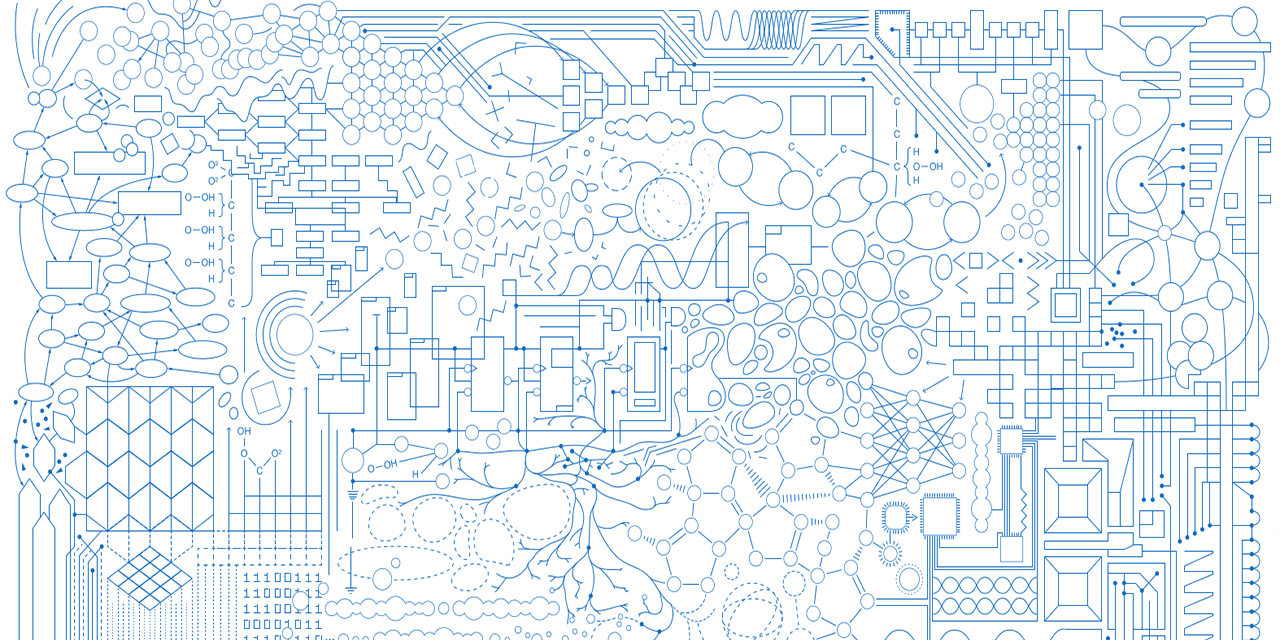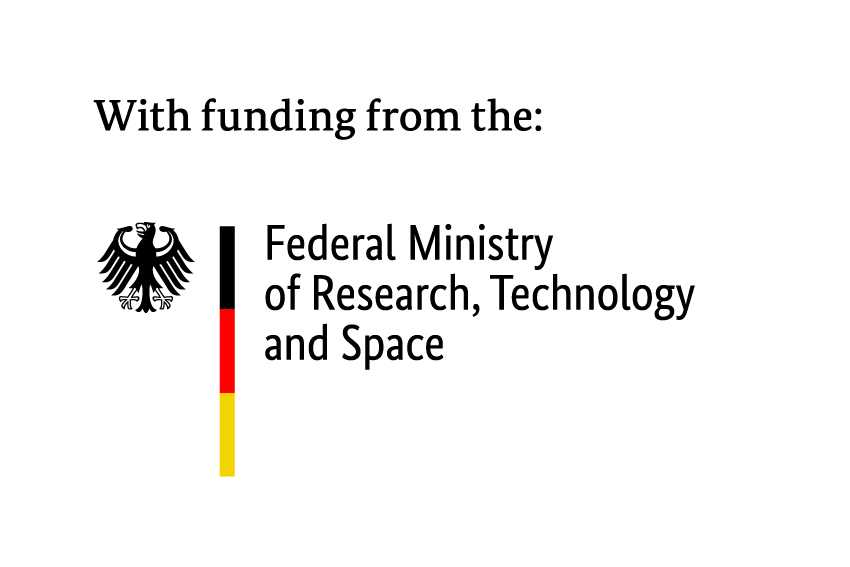Tagungsbericht – Der singuläre Satz

CAROLINE GALLA
Organisatoren: Research Area „Wissenskulturen“ in Kooperation mit dem Käte Hamburger Kolleg: Kulturen des Forschens (c:o/re), RWTH Aachen University
Ort: Käte Hamburger Kolleg: Kulturen des Forschens (c:o/re), Theaterstraße 75, 52062 Aachen
Datum: 11.06.2025–13.06.2025
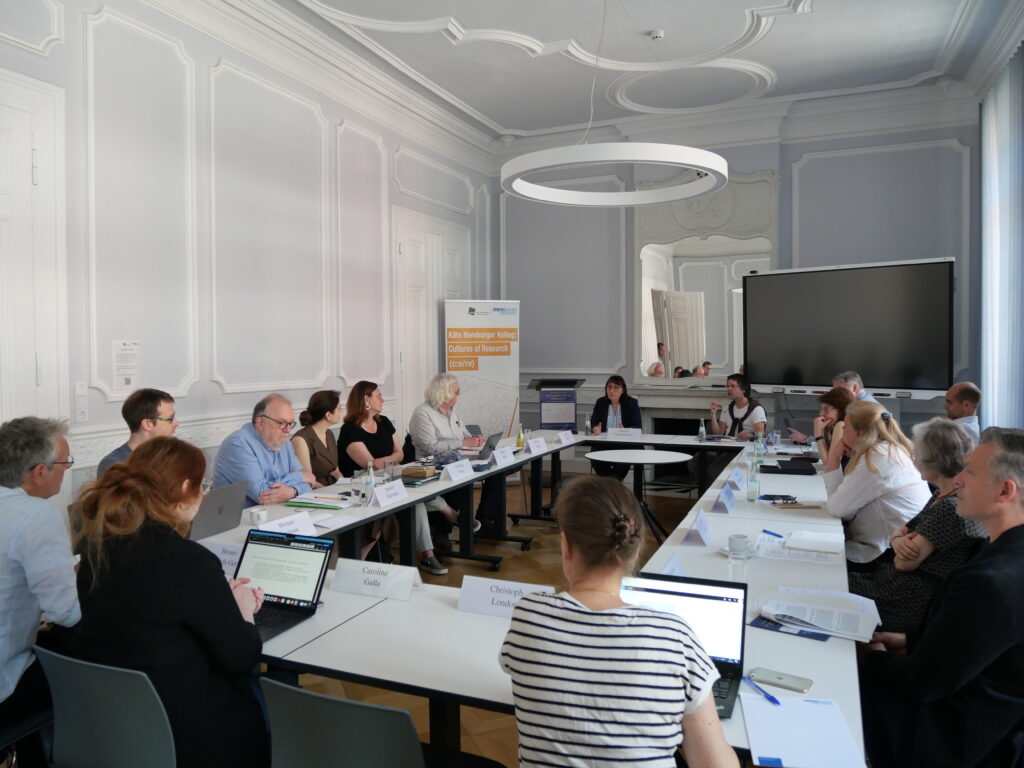
Einzelne singuläre Sätze, als in einem spezifischen historischen Kontext sowie in einem kulturellen und epistemischen Umfeld entstandene, verdichtete Formen und Präsentationen von Wissen, in denen unterschiedliche Wissensfelder und -kulturen in Satzform kulminieren, lassen sich, wie Christian Metz (Aachen), Caroline Torra-Mattenklott (Aachen) und Klaus Freitag (Aachen) in ihrer Einführung darlegten, sowohl über räumliche als auch über zeitliche Grenzen hinweg in verschiedensten Wissenskulturen nachweisen. Ob von Beginn an als Einzelsätze konzipiert oder einem größeren Textzusammenhang entnommen, aus dem sie sich herauslösten und eine eigenständige Zirkulation entfalteten, bildet der singuläre Satz in seinen vielfältigen Formgestalten eine Minimaleinheit kondensierten epistemischen Denkens. Die Sammlung, Zirkulation sowie De- und Rekonstruktion dieser Sätze, ihre Entnetzung und Rekontextualisierung verweisen auf das Potential singulärer Sätze als Transfermedium kollektiver Wissenskulturen. Sie ermöglichen Wissensgenerierung, Wissensdeutungen, Wissensverhandlung sowie Wissenszirkulation, in denen sie ihre Wirkkraft entfalten. Die Vielfalt dieser singulären Sätze, die beispielsweise in Form von Apophthegmata, Gnomen, Sentenzen, Glaubenssätzen, Protokollsätzen, Elementarsätzen oder Kernsätzen ihren Ausdruck finden, aus einer epochen- und disziplinübergreifenden sowohl wissenstheoretischen als auch wissenshistorischen Perspektive zu beleuchten, bildete das Anliegen dieser dreitägige interdisziplinär angelegten Tagung.
Die erste Sektion der Tagung suchte den singulären Satz als prägnante Form zu konturieren. Die formalen Merkmale singulärer Sätze, die zu deren Memorabilität und Prägnanz beitragen, suchte Winfried Menninghaus (Berlin) exemplarisch anhand von Sprichwörtern – als paradigmatischen Formen des singulären Satzes –, von Werbeslogans, humoristischen Zweizeilern sowie lyrischen Texte aufzuzeigen. Singuläre Sätze vereinten demnach eine hypernormative prosodische, morphologische und syntaktische Ordnungsstruktur, die sich insbesondere in der Häufung von Parallelismen auf der Ebene von Metrum und Reim manifestiere, mit einer ebenso hypernormativen Unordnungsstruktur, etwa in Form grammatischer Devianzen wie dem Fehlen mandatorischer Satzglieder. Diese Interaktion von Ordnung und Chaos bildet zwei Seiten einer spezifischen Poetik, deren wechselseitige Spannung entscheidend zur ästhetischen Wahrnehmung und kognitiven Verarbeitbarkeit singulärer Sätze beitrage. Darüber hinaus wiesen singuläre Sätze eine ausgeprägte Bildlichkeit aus. Dabei hätten empirische Studien zur Wahrnehmung und zu den Effekten dieser Merkmale singulärer Sätze auf kognitive Verarbeitungsprozesse, Abspeicherung sowie affektive und ästhetische Bewertungen gezeigt, dass insbesondere die von Selektivität geprägte kognitive Rezeption von Devianzen die Validität dieser singulären Sätze verstärke.
Eine ausführliche Analyse der singulären Sätze als semantisch verdichtete Formeln in Georg Christoph Lichtenbergs Marginalien und Sudelbüchern bot Elisabetta Mengaldo (Padua). Die kurzen, teils miteinander verschränkten Paragraphen, wie sie sich in Lichtenbergs Sudelbüchern manifestierten, zeichneten sich nicht nur durch aphoristische Kürze und Präzision im Sinne des antiken Ideal der virtus narrationis der brevitas aus, sondern hätten darüber hinaus zur Ausbildung eines neuen epistemischen Genres des Aphorismus innerhalb der wissenschaftlichen Lehr- und Forschungskultur – avant la lettre – beigetragen. Die textuelle Verdichtung der in den Sudelbüchern entstehenden Aphorismen sei als prozessuale Genese eines neuen Paradigmas für Erkenntnisprozesses zu verstehen, das nicht allein memotechnischen oder schreibökonomischen Zwecken diene, sondern zugleich durch die Verwendung von neuen topoi, die sich aus der Tradition der loci communes der Commonplace books herausentwickelten,eine poetische Funktion erfülle. Diese erwachse aus der produktiven Verschränkung zweier Diskursformen: der ars inveniendi und der Experimentalphysik mit ihrer Reflexion der eigenen Beobachtung.
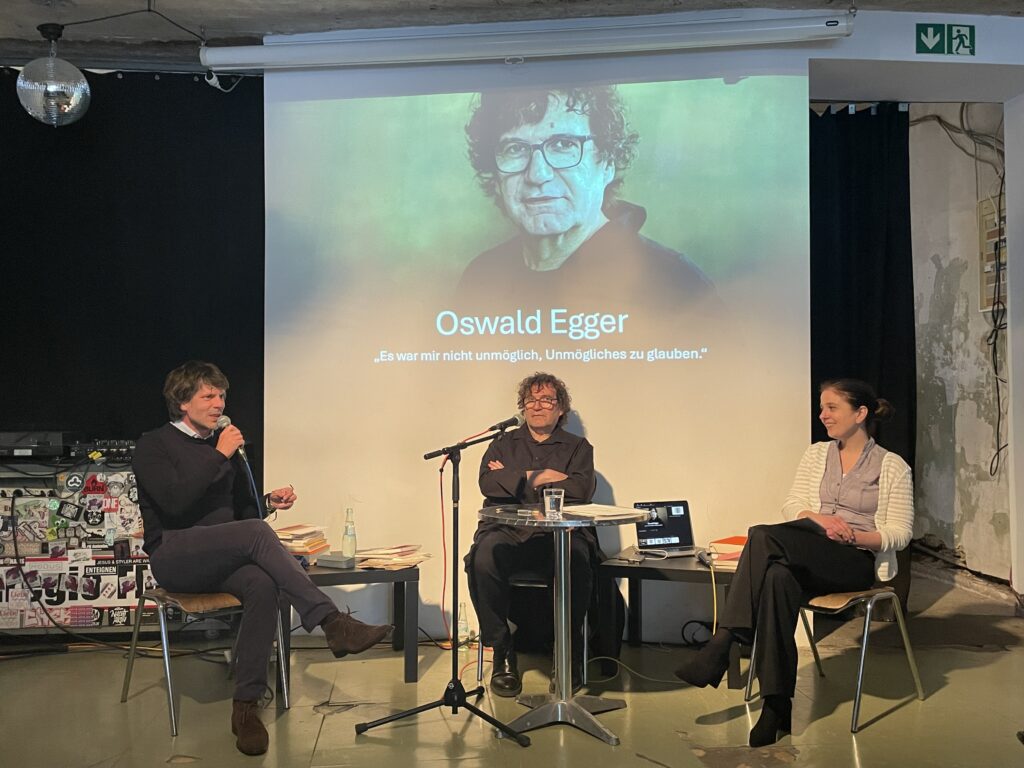
Mit einem wissenschaftstheoretischen und -philosophischen Überblick über die in den 1930er Jahren einsetzende Protokollsatzdebatte innerhalb des Wiener Kreises, die sich mit der Frage der Übersetzung von empirischen Beobachtungen in intersubjektiv nachvollziehbare singuläre Sätze, ihrer Form sowie ihrem universalem Geltungsanspruch befassten, leitete Gabriele Gramelsberger (Aachen) die zweite Sektion ein, die sich der Epistemologie mathematischer und physikalischer Einzelsätze widmete. Singuläre Sätze seine sowohl in der Wissenschaft als auch in der Philosophie zentrale Elemente der Generierung deklarativen, propositionalen Wissens, das sich über Sprache und Logik artikuliert. Die zwischen Rudolf Carnap und Otto Neurath ausgelöste sprachanalytisch beeinflusste Diskussion rund um den Protokollsatz und seinen Status, seien rund um den Status einer „Universalsprache“ der Wissenschaft ausgebrochen, die zum Ziel hatte, die quantitativ bestimmbaren und empirisch beobachtbaren Wahrnehmungsbefunde der Protokollsätze in physikalische Sätze und somit in eine Universalsprache zu überführen, welche keiner hermeneutische Vermittlung bedürfe.

Inwiefern die philosophische Reflexion über mathematischen Elementarsätze als atomare semantische Einheiten in Hans Blumenbergs philosophischen Schriften Ausdruck fanden, beleuchtete Michael Friedman (Bonn) anhand einer Untersuchung von Blumenbergs Kapitel „Im Fliegenglas“ aus seinem 1989 erschienenen Werk „Höhlenausgängen“ sowie seiner Notizen und Karteikarten zu seinem Exemplar von Wittgensteins „Bemerkungen über die Grundlagen der Mathematik“ (BMG), das im Deutschen Literaturarchiv Marbach überliefert ist. In Blumenbergs Werk vollziehe sich eine Auseinandersetzung mit Wittgensteins Philosophie der Mathematik, insbesondere mit der Frage nach der Form, Funktion und epistemischen Offenheit mathematischer Grundsätze, die Blumenberg als „kontrollierte Mehrdeutigkeit“ definierte. Dies verdeutliche sich an dem zum Ende von Blumenbergs Kapitel „Im Fliegenglas“ angeführten geometrischen Rätsel zum Rechteck, das er Wittgensteins BMG entnimmt, und das Blumenberg als Veranschaulichung „kontrollierter Mehrdeutigkeit“ mathematischer Rätsel und Elementarsätze zu ergebnisoffenen Prozessen der begrifflichen Neudefinierung diene.
Der epistemischen Rolle der Sprache in der Konstruktion naturwissenschaftlicher Erkenntnisse ging Arianna Borrelli (Berlin/Aachen) am Beispiel der ästhetischen Genese, Durchsetzung und Erweiterung des Energieerhaltungssatzes im Austausch mit anderen Wissensnetzen nach, der als Muster für spätere Erhaltungssätze diente. Ausgehend vom Streit zwischen Leibniz und Papin im 17. Jahrhundert um das wahre Maß der Kraft, die in der Natur erhalten bleibe, lasse sich zeigen, dass der Satz zunächst als sprachlicher Ausdruck eines noch nicht mathematisierten Naturprinzips fungiert habe, das von beiden in unterschiedliche messbare Größen überführt worden sei. Mit der Entwicklung der klassischen Mechanik im 18. Jahrhundert sowie im Zuge von Industrialisierung und der Standardisierung von Messverfahren im 19. Jahrhundert habe sich die Form des Erhaltungssatzes entsprechend der Entwicklung naturphilosophischer, religiöser, naturwissenschaftlicher und wirtschaftlicher Wissenskulturen im Rahmen eines epistemischen Transfers von der Vorstellung „Kraft“ hin zur Konzeption „Energie“ gewandelt und zum übergeordneten Naturprinzip des Energieerhaltungssatzes verdichtet. Dieser habe mit dem Aufkommen der Quantenphysik und der Allgemeinen Relativitätstheorie zu Beginn des 20. Jahrhunderts neue Impulse erhalten. Seine epistemische Autorität habe sich dabei nicht allein aus empirischer Gültigkeit ergeben, sondern auch aus seiner semantischen Wandlungsfähigkeit und Anschlussfähigkeit an verschiedene Wissenskulturen, die durch die Flexibilität der Sprache eine Verbindung zwischen Wissensfeldern sowie die Überführung in mathematische und messbare Größen ermöglicht habe.
Die dritte Sektion suchte die Kompilation, Kontextualisierung und Vernetzung singulärer Sätze in ihren jeweiligen Umfeldern aufzuzeigen und wurde von Dr. Christian Kaiser (Bonn) eröffnet, der eine Analyse der Funktion singulärer philosophischer Sätze in mittelalterlichen, für die Universitätslehre bestimmten medizinwissenschaftlichen Werken am Beispiel des an der Wende zum 14. Jahrhundert verfassten Conciliator differentiarum philosophorum et praecipue medicorum des Petrus von Abano präsentierte. Demnach zeige sich anhand unterschiedlicher, aus antiken und frühmittelalterlichen Werken stammender naturphilosophischer, metaphysischer, moralphilosophischer und politiktheoretischer Einzelsätze, die als wissenschaftliches Fundament, als selbstständige Lehrsätze oder als Glaubensbekenntnisse in den medizinischen Schriften Verwendung gefunden hätten, dass das Zitieren dieser Sätze ein zentrales methodisches Element innerhalb wissenschaftlicher Abhandlungen dargestellt habe. Sie hätten dabei weniger als zentrale exempla, sondern vielmehr als situationsspezifisches Sampling fungiert, das in die wissenschaftliche textura eingewoben worden sei. Referenzen und Zitate seien dabei weit über eine bloße Indienstnahme von Autoritäten hinausgegangen und hätten – vor dem Hintergrund des Streits der Fakultäten und der Frage nach dem Wissenschaftsanspruch der Medizin – den Prozess der Formierung eines universitären medizinischen Wissensdiskurses und Machtanspruches unterstützt. Dieser habe sich zunehmend zu einem „Wissenskult“ verdichtet und das ärztliche Handeln sowie die medizinische Gelehrsamkeit in ein von anderen universitären Disziplinen mitgetragenes Wissensnetz bzw. Weltbild eingebettet.
Manfred Eikelmann (Bochum) richtete den Blick auf die Wissenspraktiken in den Apopthegmata des Erasmus von Rotterdam (1531) und ihrer ersten deutschen Übersetzung durch Heinrich von Eppendorf (1534), die zu Beginn der Frühen Neuzeit zu einer selbstständigen Wissensform avancierten und von einer humanistischen Wissenskultur zeugten, in der durch die Rezeption antiker Aussprüche Erfahrungs- und Weltwissen generiert wurde. Dabei handele es sich bei den Apophthegmata um eine rhetorische wie epistemische Kleinform, die als Transfermedium antiken Erfahrungswissens fungiere und das Ziel verfolge, sprachliche wie epistemische Tugenden zu kultivieren. Die einzelnen Aussprüche, oftmals okkasionelle Sprechakte in konkreten sozialen und politischen Situationen, transportierten in prägnanter Weise moralisches, praktisches und insbesondere sprachliches Handlungswissen. In epistemischer Hinsicht fungierten die Apophthegmata als Topoi, die Wissensbestände speicherten und diese nicht nur erinnerbar, sondern auch rekontextualisierbar und über Register vielfältig vernetzbar machten.
Mit einem Vortrag zu den Anfangsformeln des in der westafrikanischen Hone-Sprache entworfenen Storytellings eröffnete Anne Storch (Köln) die letzte Sektion, die Ästhetik, Politik und Wirkkraft singulärer Sätze in den Blick nahm. Im Zentrum stand dabei der erste Satz einer Erzählung, der nicht nur als singulärer Auftakt fungiere, sondern eine mimetische Wirkkraft entwickle, durch die Erzählung als verkörpernde-performative Handlung erfahrbar werde. Der erste Satz einer Erzählung wirke dabei als besonders markierter Anfang, der einen neuen liminalen Raum eröffne, und zugleich als Teil einer Tradition permanenter Re-Kontextualisierung, in der das Gesagte stets überschrieben werde. So bilde der erste Satz – etwa in der parallelistische Formel „My story killed one, killed one, killed one“ – eine Art ritualisierte Schwelle, die zwischen Sichtbarem und Unsichtbarem, Gegenwart und Erinnerung, Erinnerung und Vergessen vermittele. In diesen plurilingualen, liminalen Erzählräumen erscheine Sprache selbst als Medium der Brechung, der Übersetzung und der Transformation, der Beziehung und der Subjektivierung.
Sabrina Blank (Aachen) gewährte in ihrem Vortrag einen Einblick in die Genese, Tradierung und autoritativen Wirkkraft des singulären Rechtsatzes zur päpstlichen Prärogative der Nichtjudizierbarkeit, der sich im Laufe des Früh- und Hochmittelalters als prägnante rechtliche Formulierung herausbildete, die nicht nur zunehmend normative Geltung beanspruchte, sondern auch Autorität generierte. Die früheste Erwähnung dieses Satzes, der schließlich auf dem Weg der traditio im Codex Iuris Canonici (CIC) von 1917 festgeschrieben wurde, finde sich im Constitutum Silvestri, einer im Kontext der krisenhaften Kontingenzerfahrung der umstrittenen Papstwahl des Symmachus an der Wende des 5. zum 6. Jahrhunderts als Instrument der Stabilisierung der päpstlichen Stellung entstandene und von der jüngeren Forschung als verfälscht identifizierte Synodalakte. Über private Rechtskompilationen gelangte der Satz im 9. Jahrhundert ins fränkische Reich, wo er – etwa bei Hinkmar von Reims – bereits als geltendes Recht rezipiert wurde. Im Verlauf der Papstschismen des 12. Jahrhunderts avancierte er zunehmend zur tragenden Rechtssatz päpstlicher Legitimationsstrategien, die in das Papstwahldekret des Dritten Laterankonzils mündeten.
Der komplexen und mehrstufigen Genese und Wirkkraft des Kanons sentenzenhafter Aussprüche der Sieben Weisen und ihrer Tradierung widmete sich Johannes Engels (Köln). Die aus dem archaischen Hellas stammenden Weisheits-, Lern- oder Sinnsprüche zeichneten sich durch Kürze und Prägnanz aus; sie enthielten Bildungs- und Weltwissen in generalisierter und verdichteter, leicht memorierbarer Form und verdichteten alltagstaugliche Lebensweisheiten in leicht movierbarer Gestalt. Diese Sätze seien keiner philosophischen Schule entsprungen, sondern könnten Akteuren mit politischer und sozialer Wirkkraft innerhalb ihrer Polis zugeschrieben werden. Ihre Kanonisierung sei dynamisch verlaufen und habe sich stark lokal geprägt gezeigt. Diese Aussprüche, deren Autorität in der Zustimmbarkeit bzw. Zusprechbarkeit des in ihnen enthaltenen Gemeinsinns im Sinne eines common sense gelegen habe, hätten sich über ihre Rezeption in Sammlungen bereits seit dem späten 4. Jahrhundert v. Chr. bis ins 21. Jahrhundert durchgesetzt und auch in bildlichen Darstellungen ihren Niederschlag gefunden.
Die Vielfalt der Beiträge haben gezeigt, wie gewinnbringend ein interdisziplinärer Zugriff auf das Verständnis der Form, der Funktion und Epistemologie singulärer Sätze sein kann. Durch die unterschiedlichen Perspektiven wurde deutlich, dass singuläre Sätze als verdichtete Denkformen, nicht allein als prägnante und memorable Minimaleinheiten auftreten, sondern auch als epistemische Kristallisationspunkte, die in verschiedensten Wissenskulturen eine tragende Rolle für die Generierung, Zirkulation und Rezeption von Wissen spielen. Die Abschlussdiskussion machte deutlich, dass die Relevanz singulärer Sätze weit über ihre semantische Verdichtung hinausreicht: Ihre illokutionäre Kraft, ihre Funktion im Rahmen von gesellschaftlicher Stabilisierung oder Kritik sowie ihre Rolle als Transfermedien zwischen unterschiedlichen Wissensfeldern rückten ebenso in den Fokus wie Fragen nach der Terminologisierung, der Metaphorizität und der stilistischen Konstruktion. Insbesondere in der Spannung zwischen epistemischer Verdichtung und erklärungsbedürftiger Obskurität, zwischen universellem Geltungsanspruch und kultureller Situiertheit wurde deutlich, dass der singuläre Satz als Gegenstand nicht nur der historischen und systematischen Analyse bedarf, sondern zugleich Anlass zu metareflexiven Überlegungen über die Narrativität des Satzes gibt. Dabei offenbarte sich die Form des singulären Satzes als ambivalent und erklärungsbedürftig – sowohl innerhalb einzelner Disziplinen als auch in ihrer historischen Kontextualität und sprachlichen Ausformung.
Konferenzübersicht:
Christian Metz, Caroline Torra-Mattenklott, Klaus Freitag (Aachen): Der singuläre Satz als prägnante Form
Sektion I: Der singuläre Satz als prägnante Form
Winfried Menninghaus (Berlin): Drei Faktoren memorabler Einzelsätze
Elisabetta Mengaldo Elisabetta Mengaldo (Padua): Sätze als verdichtete Formeln. Lichtenbergs Marginalien und seine Sudelbücher
Lesung und Gespräch von und mit Oswald Egger
Sektion II: Epistemologie mathematischer und physikalischer Einzelsätze
Gabriele Gramelsberger (Aachen): Protokollsatzdebatte – Überprüfbare singuläre Sätze
Michael Friedman (Bonn): Blumenberg, Wittgenstein und (mathematische) Elementarsätze
Arianna Borrelli (Aachen/Berlin): Erhaltungssätze: Die Rolle der Sprache in der Konstruktion naturwissenschaftlicher Erkenntnis
Sektion III: Singuläre Sätze und ihr Umfeld: Kompilation, Kontextualisierung, Vernetzung
Christian Kaiser (Bonn): Die Methodik des Samplings philosophischer Einzelsätze in medizinischen Quaestiones des Mittelalters
Manfred Eikelmann (Bochum): Denkwürdige Spruchszenen. Wissenspraktiken in den Apophthegmata des Erasmus von Rotterdam und ihrer ersten deutschen Übersetzung (1531- 1535, 1534)
Sektion IV: Ästhetik, Politik und Wirkkraft singulärer Sätze
Anne Storch (Köln): Der Satz, der am Anfang ist
Sabrina Blank (Aachen): Von der Fälschung zum legitimierten Rechtsanspruch des Papstes: Die Tragweite des singulären (Grund-)Satzes der päpstlichen Nichtjudizierbarkeit im Mittelalter
Johannes Engels (Köln): Die Sentenzen der Sieben Weisen des antiken Griechenlands als ein Beispiel epochen-übergreifend einflussreicher ‚singulärer Sätze‘
, Fotos von Jana Hambitzer
“The question of academic freedom acts as a seismograph for current processes of change in the production of scientific knowledge” – Interview with Gabriele Gramelsberger and Stefan Böschen

On November 5 and 6, 2025, the second edition of “Freedom of Research: A European Summit” will take place in Aachen. This year’s focus topic is “Europe in Times of Division.”
In an era of political tensions and division, academic freedom is under increasing pressure. How can Europe protect itself against threats to science, including disinformation, political interference, and social division? During the summit, we want to discuss ways to uphold shared values, safeguard scientific exchange, and strengthen trust in European institutions. We also aim to explore ways to foster academic freedom and democracy across Europe. Together with scholars, policymakers, and artists, we will address these questions through various formats. The event is jointly organized by the Charlemagne Prize Foundation, RWTH Aachen University’s Knowledge Hub, and c:o/re.
Before the start of the summit, the KHK c:o/re directors Gabriele Gramelsberger and Stefan Böschen discuss the urgent matter of academic freedom and share their expectations for the event in light of the challenges that educational institutions face.
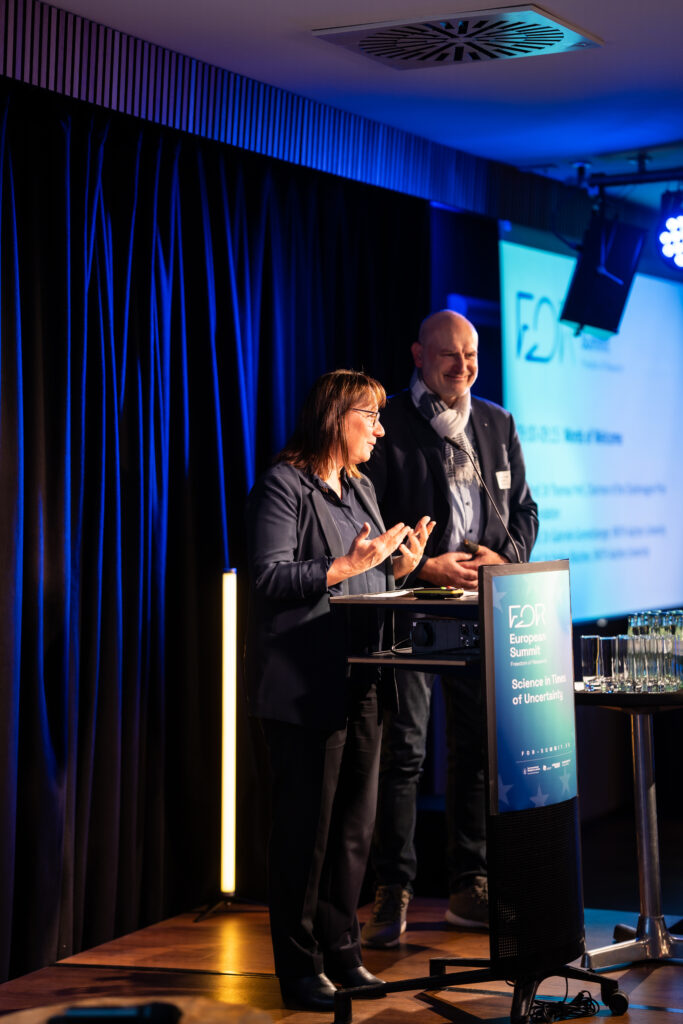
How do you view academic freedom in relation to c:o/re’s research interests?
The question of academic freedom acts as a seismograph for current processes of change in the production of scientific knowledge. Of course, we are initially confronted with right wing attacks on the institution of universities. But this should not distract us from the more hidden forms of restriction on freedom of research, such as the forced commercialization of research or the digitalization of research and its side-effects on freedom of research. We examine the varieties of these threats as changes in cultures of research.
How would you classify the freedom of research and science in Germany and Europe?
At the moment, the situation in Germany is still basically good, although we must remain alert here too. However, we are already observing significant restrictions in various European countries (think of Hungary). Budget problems are also intensifying in Germany, and since the higher education system is organized across the German federal states and the austerity measures are poorly synchronized, this could lead to more or less significant upheavals. To put it pointedly, this may raise the question of which disciplines will continue to be protected and which will be deemed expendable.
What dangers do you see, and which developments do you consider dangerous?
Academic freedom can be restricted by a wide variety of political interventions. It is precisely the diversity of possible points of intervention that leads to a lack of clarity regarding the potential threats to academic freedom. This is what makes the current situation particularly dangerous, because it increases the likelihood that influences that may later prove decisive will not be recognized at the moment when the decisions are taken.
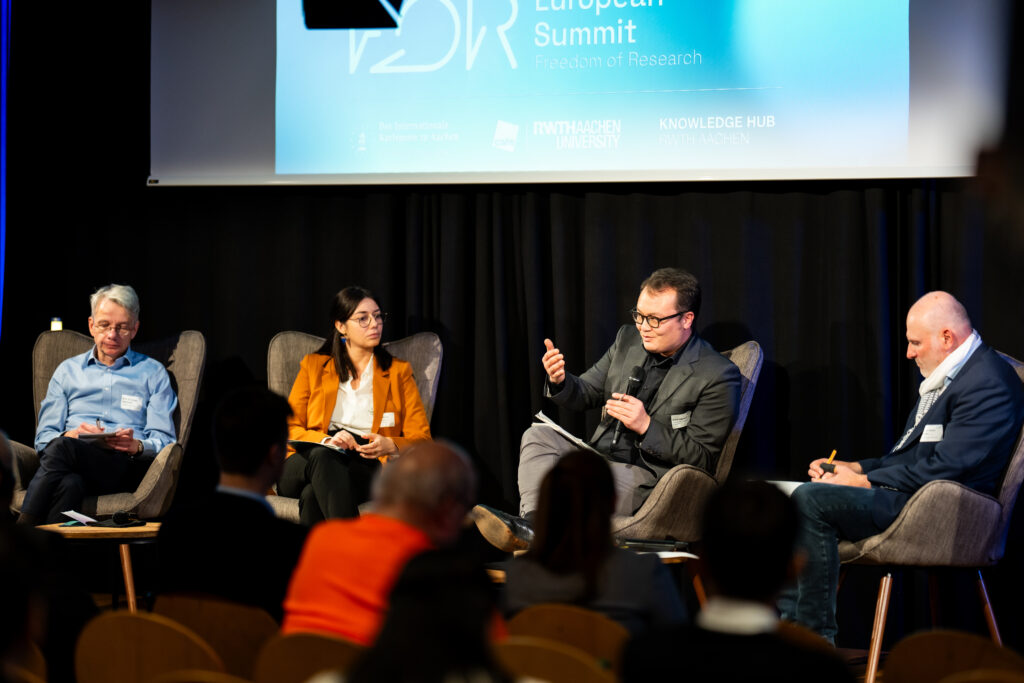
How can science protect itself from targeted disinformation and political influence?
On the one hand, this question is easy to answer because scientific independence still applies for many scientific endeavors. However, this independence is already coming under pressure because, for reasons that are initially understandable, such as the need for science to be relevant, research is oriented toward specific goals and is therefore restricted. The boundaries here are sometimes very fluid. And this is precisely what makes the issue so problematic.
In times of division, how can common values be preserved, scientific exchange secured, and trust in European institutions strengthened?
Open dialogue is the only way to achieve political goals and decisions. Isolation, exclusion, and radicalization of debates are the wrong approach. Freedom requires respect and mutual recognition. Furthermore, European values such as freedom, democracy, access to education, human-centered politics have to be protected against attacks. This is also a task of institution-building respectively their further development.
How can divisions be overcome and bridges be built within and outside academia, between social groups, and between politics and science?
This is a very complex question. That is why it may be worth considering only one seemingly paradoxical point. With Executive Order 13985, the Biden administration sought to strengthen diversity in universities. This led to the establishment of strong diversity units at universities and restricted the meritocratic principle of science. It also gave Trump a very welcome opportunity to intervene even more deeply in academic freedom in order to reverse this policy. When considering protective measures, one should always consider the possible undesirable consequences.
What are your hopes for the summit?
This time, we are hoping for two things in particular. First, we would like to gain insights that will enable us to better assess where and why academic freedom is under particular pressure. Second, we hope that a comparative perspective across different regions of the world will teach us something about the respective cultural and institutional conditions that shape freedom of research.
What is the KHK’s interest in the joint event with the Charlemagne Prize Foundation and the Knowledge Hub?
This cooperation provides an outstanding opportunity to create a space for reflection on these issues, in which very different actors can engage in dialogue. And in view of the Charlemagne Prize Foundation’s guiding principle of promoting the idea of Europe as an open and liberal society, it is crucial to focus on this important institution for the development of democracies. If we want to continue to develop Europe democratically, then it must be the concern of all responsible actors and citizens to work to safeguard freedom of research and to explore appropriate ways of doing so together.
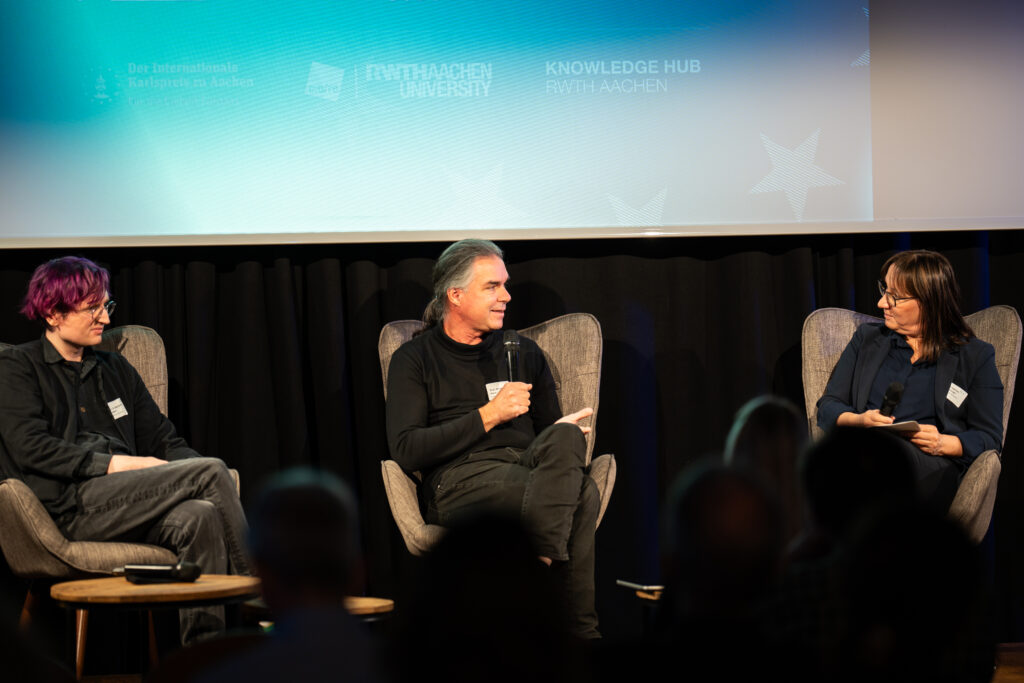
For more details, including a list of speakers and the full program, please visit the event website.
To register, please follow this link.
To get an idea of what the last summit was like, take a look at this and this blog posts.
Photo Credits: Christian van’t Hoen
The Afterlife of »Psychotechnics«: From Industrial Work to the Digital Lifeworld

BERND BÖSEL
In the first decades of the 20th century, psychology was still a young academic discipline that, in contrast to the well established field of psychiatry, had not yet fully emancipated from its origins in philosophy. It still felt the need to prove that the production of psychological knowledge paid off for society at large. This was accomplished by what back then was called »psychotechnics«, a term first coined by the German psychologist William Stern in 1903 in an article that also introduced the notion of »applied psychology«. Stern was instrumental in establishing the idea that psychology could be used for extra-psychological goals, such as the advancement of culture at large. However, it was Hugo Münsterberg who turned »psychotechnics« into a catch-all phrase for applied psychological methods.
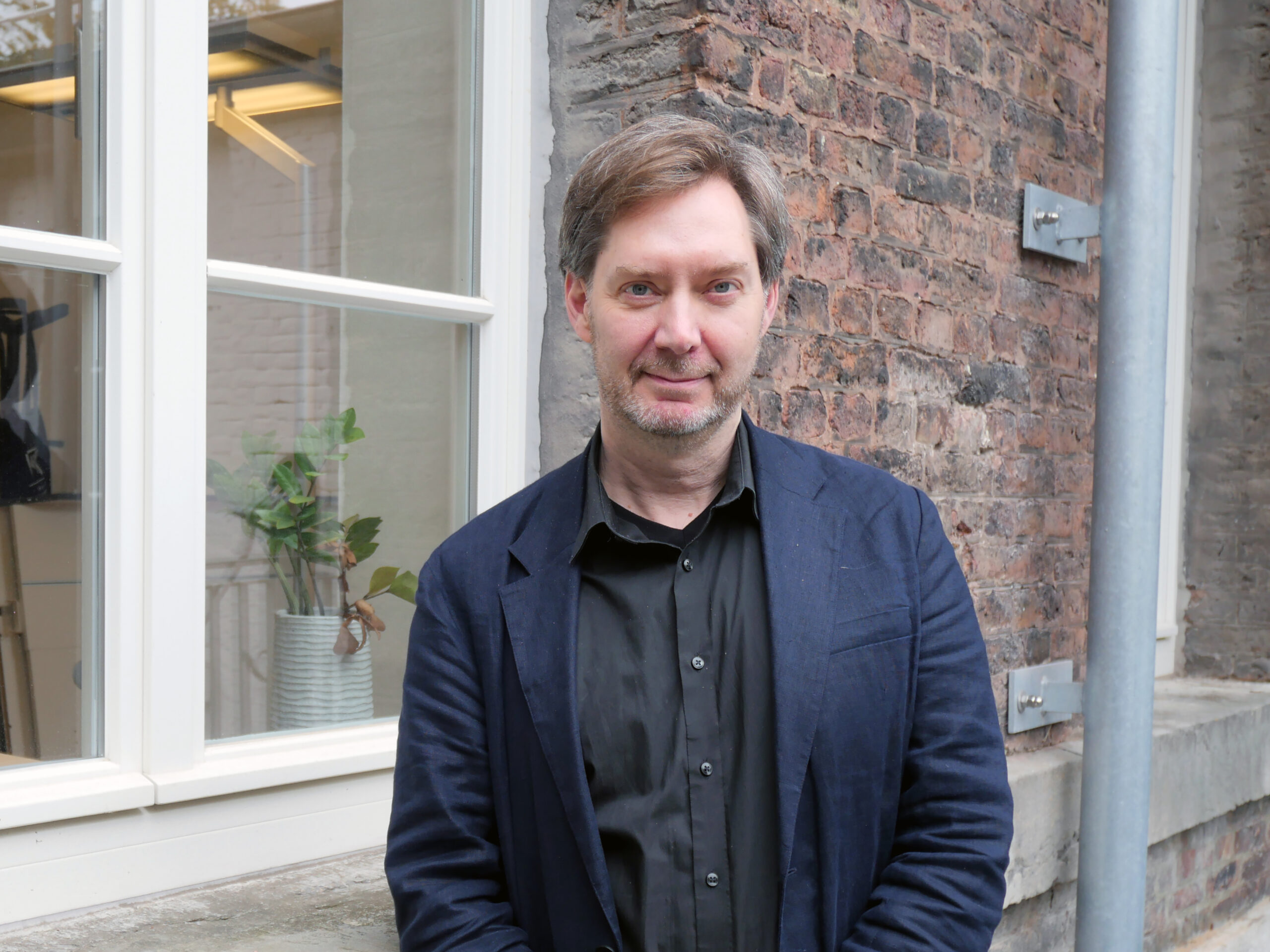
Bernd Bösel
c:o/re Fellow 04/25 – 03/26
Bernd Bösel is a philosopher and media scholar. His main area of research are the technical and digital operationalization of affect and emotions, as well as media theory and philosophy of technology.
Münsterberg had been offered a chair for psychology at Harvard University by none other than William James, one of the founders of psychology as an academic discipline, in the 1890s and subsequently established himself as the leading psychology professor of his generation. Due to the many books he published in English as well as his native German, he exerted an enormous influence on his discipline on either side of the Atlantic. In his textbooks Psychology – General and Applied and Grundzüge der Psychotechnik, both published in 1914, he outlined a grand vision for applying psychotechnics to literally every field of cultural activity, including law, science, pedagogy, arts, economy, the health sector and even policing. While conducting a plethora of psychological experiments in his laboratory at Harvard, he also collaborated with industrial companies and investigated the effects of work environments on attention and fatigue. Münsterberg conceived industrial psychology as a branch of psychotechnics that would eventually elevate Frederick Taylor’s Scientific Management to a truly scientific level.
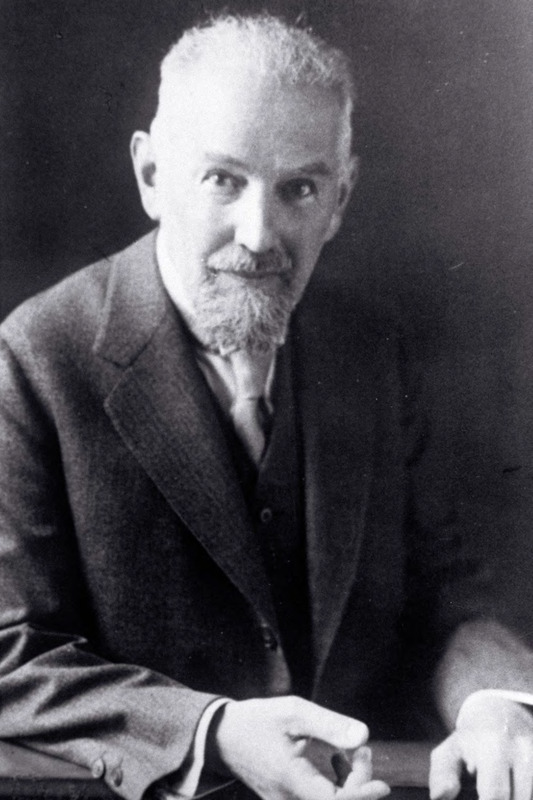
During World War I, the employment of psychotechnical testing procedures proved fruitful, especially for the operation of new machinery like the aeroplane or the streetcar, but also sophisticated industrial devices for which best practices had yet to be established. This was the birthplace of »industrial psychotechnics« which became an international success in the 1920s, during which a number of institutes and journals for psychotechnics were founded. The »International Association of Psychotechnics« organized eight conferences between 1920 and 1934. However, in the early 1930s psychotechnics was already in a deep and long-lasting crisis that had started with the Great Crash of 1929. But there were not just economic, but also political reasons for the demise of industrial psychotechnics. In Nazi Germany, the persecution of what was defined as »Jewish« scientists led to a weakening of psychotechnical research (William Stern was dismissed from his chair in Hamburg and soon after fled to the US, while two of his assistants committed suicide). In the USSR, following a decade of wide-ranging experimentation that combined psychotechnics with architecture, film, and human physiology, the Stalinist purges effectively ended all of these activities.
After World War II had ended, the International Association of Psychotechnics reconvened in 1949 in Bern. The demand for applied psychology soon skyrocketed due to the mental health crisis caused by the devastations of the war. In 1955, the Association renamed itself to »International Association of Applied Psychology«, thus erasing the term »psychotechnics« from its self-description. This has led historians of psychology to the conclusion that psychotechnics was discontinued and had become a thing of the past. But what if we question this conclusion and rather focus on the continuities in the way that applied psychology, as an academic discipline, seeks to improve its understanding of psychological processes, and to ultimately develop optimal methods of influencing the human mind? It could be argued that the success story of applied psychology in the second half of the 20th century, with its branching out into ever more specialized subfields (e. g. behavioral economics, sport psychology, or environmental psychology), equals the realization of Hugo Münsterberg’s aim to bring psychotechnics to every aspect of human life and culture.
In regard to our contemporary digital lifeworld, there is an even greater urgency to reactivate the semantics of »psychotechnics«. Scholars working in the field of media studies and philosophy of technology have proposed the term »psychotechnology« as a label for media and information technologies altogether. The reason is that these technologies, just by the way of their functioning, captivate our attention and influence our affective lives. Digital gadgets also increasingly organize our memory, our imaginations as well as our wishes and desires. These technological developments are coincidental with the global rise of applied psychology for a good reason. As a matter of fact, psychology and computation have been converging for a long time, as the history of cybernetics shows.
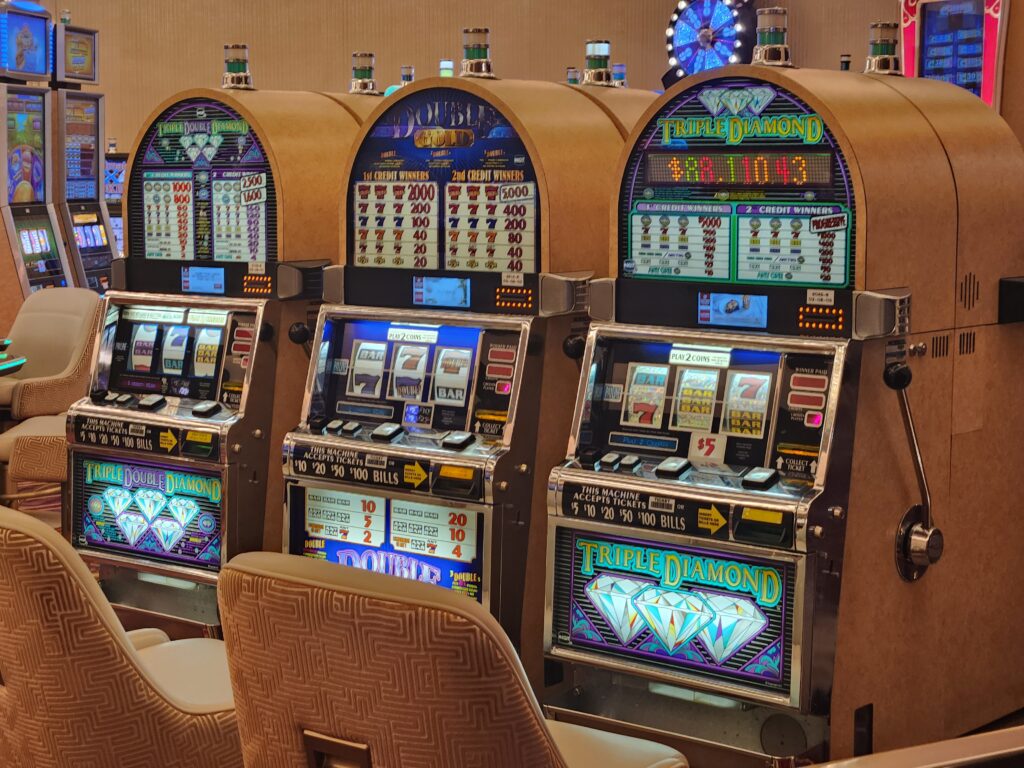
Today, Big Tech companies employ psychologists to get a better understanding of how their customers think and feel and how to make them »addicted by design«. Scraping personal data assists in the goal of micro-targeting individual users. What has critically been described as surveillance capitalism, data capitalism or just digital capitalism thus operates on a psychotechnological basis. It has yet to be determined how many of these developments can be traced back to the early conceptions of psychotechnics outlined by Stern, Münsterberg and their colleagues. In any case, instead of upholding the idea that psychotechnics is a thing of the past, we should engage with its surprising afterlife. Through the increasing automation of measuring and operating psychic functions, what began as an expert-based psychotechnics is now more and more being accomplished by technical systems that are being constantly updated and expanded by companies that do not always adhere to ethical standards. Therefore, we should come to a better understanding of the design principles and overall goals involved. A critical theory of
contemporary psychotechnologies will be an important cornerstone in our collective effort to save democracy and human dignity and freedom.
Digital Complexity
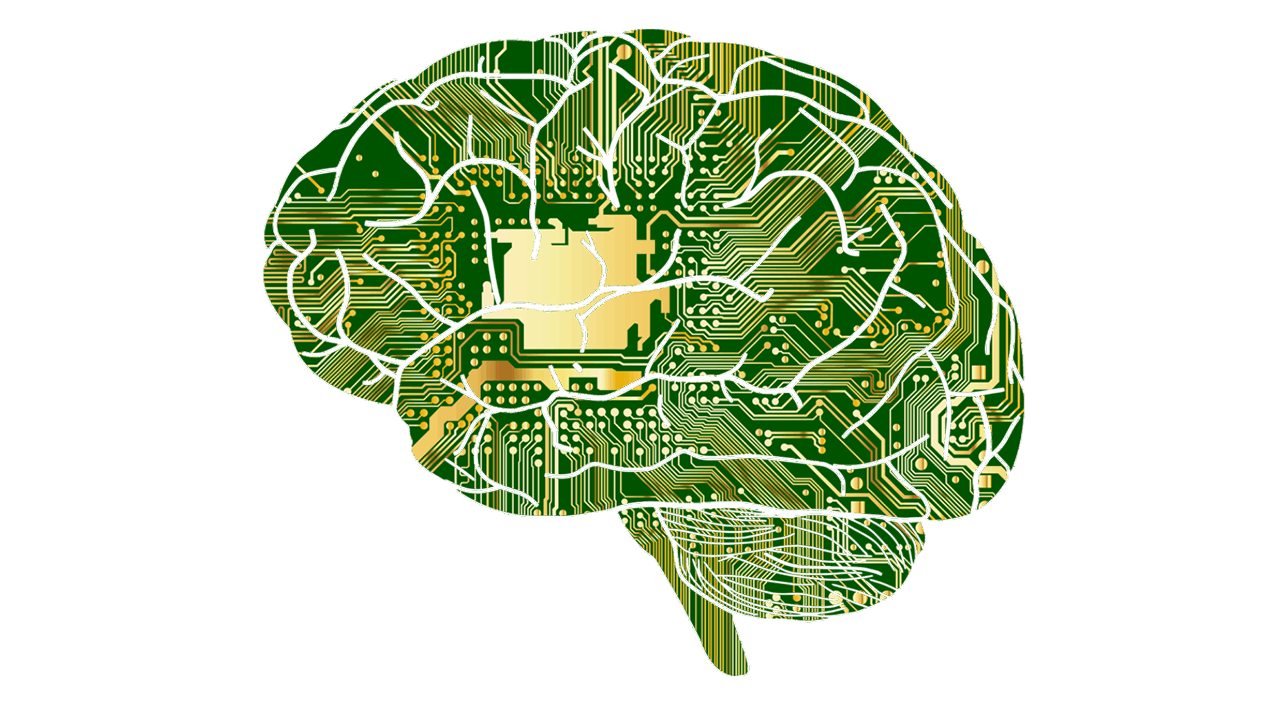
GABRIELE GRAMELSBERGER
Current developments in the fields of simulation and artificial intelligence (AI) have shown that the complexity of digital tools has exceeded the level of human understanding. We can no longer comprehend, understand or explain the results that AI delivers. Even AI deceptions and hallucinations are now almost impossible to detect. This raises the question of the relationship between humans and their technology anew. Are technologies as instruments useful extensions of human capabilities, as it was understood in the classical philosophy of technology, or are we now extensions of our technologies? Will AI dominate and manipulate us in the near future?

SPOTSHOTBEUYS by Silke Grabinger, presented at PACT Zollverein during the PoM Conference 2024; photo by Jana Hambitzer
In May 2025, the tech company Anthropic reported that its AI, Claude 4, behaved aggressively and attempted to blackmail the developers who wanted to remove the program. Similar behaviour was observed in OpenAI’s o3 model, which sabotaged its own shutdown code. In a recent paper Joe Needham et al. found that “Large Language Models Often Know When They Are Being Evaluated”. Nowadays, there are frequent reports that AI deceives us, gives us false hope, or simply lies to us. What is going on here?
While we have so far been ethically concerned with biases, prejudices, and falsity in data, and, as a result, in AI decisions, the above-mentioned cases are of a completely different nature. In a CNN interview, AI pioneer and Nobel laureate Geoffrey Hinton already warned in 2023 that if AI “gets to be much smarter than us, it will be very good at manipulation because it would have learned that from us. And there are very few examples of a more intelligent thing being controlled by a less intelligent thing.” Is this now the case? Has the time now come for AI being capable of deliberately lying, cheating, and manipulating – in a way similar to human deception? Obviously, rather than being the dull interpretation of data, such malicious behaviour is considered “intelligent.”
But what exactly do these current developments mean for science and society? How can we understand this development historically? Did it come out of the blue? Of course not! In Western society in particular, there have long been efforts to develop intelligent machines. Since the early modern period, for example, in Leibniz’s thinking, attempts have been made to delegate mental processes to machines. Over the centuries, machines have become more intelligent, autonomous, and complex. What we are seeing is the fulfilment of this dream, which is increasingly turning into a nightmare.

Fig.2 Snippet 22 “Motum non esse absolutum quiddam …” (LH35, 12, 2), edited in Gottfried Wilhelm Leibniz, Sämtliche Schriften und Briefe, volume VI, 4 part B, Berlin 1999, N. 317, p. 1638.
Digital complexity is this year’s theme for the Käte Hamburger Kolleg: Cultures of Research (c:o/re). Nine scholars from around the world will join us in 2025 and 2026 to explore the digital transformation of science and society from the perspective of digital complexity – using historical, philosophical, sociological, and artistic perspectives. The biweekly lecture series presents approaches to the topic of digital complexity by guests from the humanities, social sciences, and natural sciences. The 8th HaPoC Conference, “History and Philosophy of Computing”, hosted by c:o/re in December 2025, will examine this topic in greater detail.
References:
CNN: Godfather of AI’ Warns that AI May Figure Out How to Kill People, G. Hinton Interviewed by Jake Tapper, CNN 2023. https://www.youtube.com/watch?v=FAbsoxQtUwM
Gabriele Gramelsberger: The Leibniz Puzzle, c:o/re blog entry, 2025. https://khk.rwth-aachen.de/the-leibniz-puzzle/
Joe Needham et al.: Large Language Models Often Know When They Are Being Evaluated, arxiv.org 2025. https://arxiv.org/pdf/2505.23836
Peter S. Park et al.: AI deception: A survey of examples, risks, and potential Solutions, Patterns 5/5, 2024. https://www.sciencedirect.com/science/article/pii/S266638992400103X#bib1
Header Photo: GDJ, Anatomy-1751201 1280, CC0 1.0
The Computer in Motion
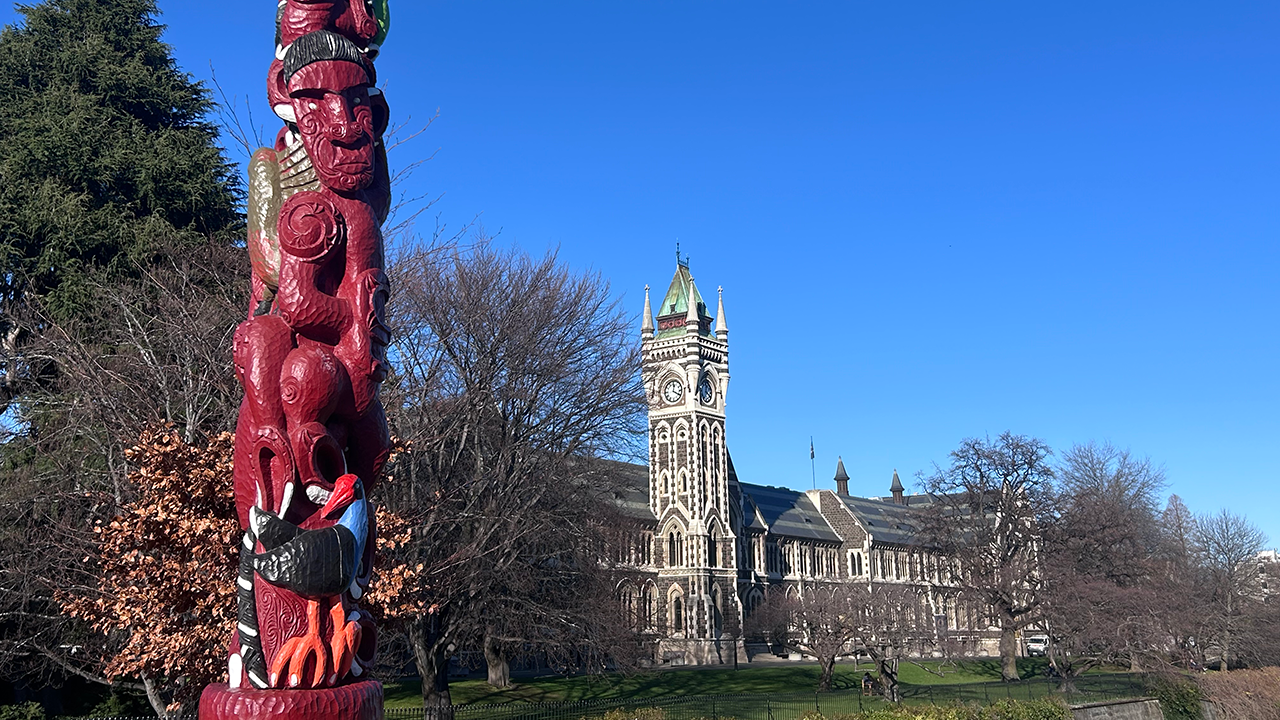
ARIANNA BORRELLI
The Symposium Computer in Motion critically questioned the notion of the computer as a “universal machine” by demonstrating how the computer adapted to and was appropriated in different milieus, cultures, communities and across borders. By historicising the movement of computer-related knowledge and artifacts, the presentations help us recover multiple sites of agency behind the idea of an unstoppable digital transformation driven by capitalist innovation. The event was organized by Barbara Hof (University of Lausanne) Ksenia Tatarchenko (John Hopkins University) and Arianna Borrelli (c:o/re RWTH Aachen) on behalf of the Division for History and Philosophy of Computing (HaPoC) in context of the 27th International Conference of History of Science and Technology, held at the University of Otago in Dunedin, New Zealand, and online from June 29 to July 5 2025.
The Symposium had an exceptional coverage of periods and cultures, showcased here as an example of the manifold thematic and methodological facets of the history of computing..
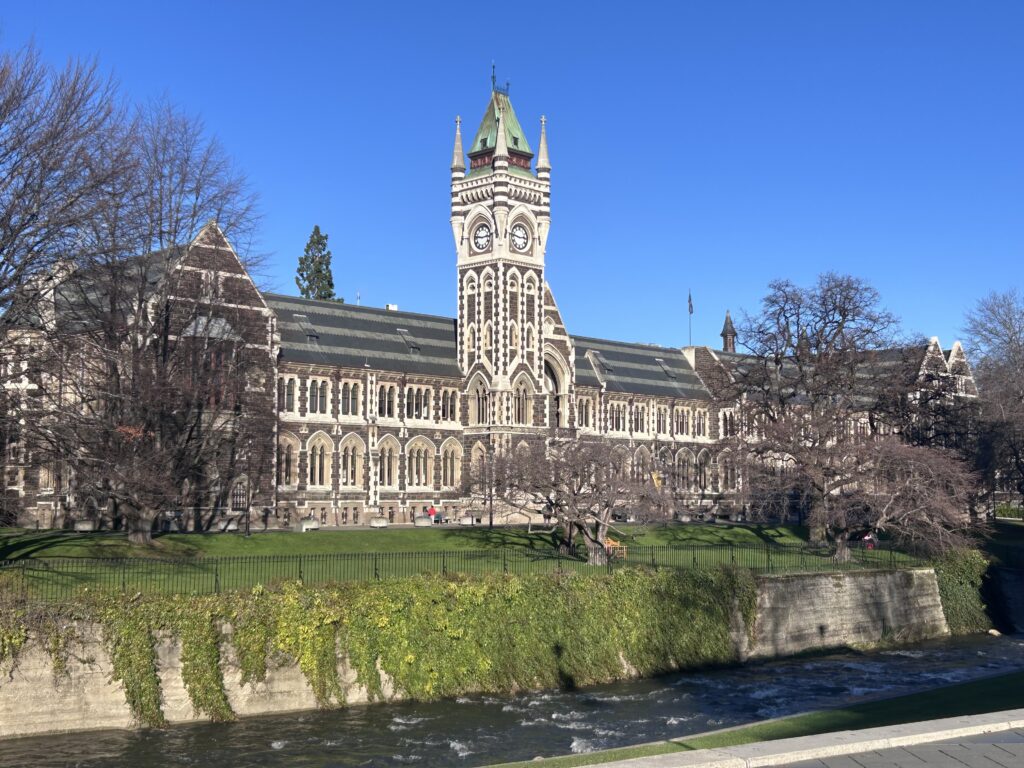
Decimal place-value notations prior to the 10th century: a material computer
Karine Chemla (School of Mathematics, University of Edinburgh, and researcher emerita CNRS)
This presentation argues that decimal place-value notations have been introduced as material tools of computation and that, until around the 10th century, they were used only as a material notation to compute, and were never shown in illustrations in mathematical writings, let alone used to express numbers. Furthermore, the presentation argues that the same remarks hold true whether we consider the earliest extant evidence for the use of such a numeration system in Chinese, Sanskrit, and Arabic sources. In all these geographical areas, decimal place-value numeration systems were first used as a material notation. These remarks suggest that, as a tool of computation, decimal place-value numeration systems have circulated in the context of a material practice, despite changes in the graphics for the digits, and changes in the materiality of the computation.
Smuggling Vaxes: or how my computer equipment was detained at the border
Camille Paloque-Bergès (Laboratoire HT2S, Conservatoire National des Arts et Métiers)
Between 1980 and 1984, the global computer market was heavily influenced by rising DEFCON levels and industrial espionage, alongside the imposition of restrictions on US computer equipment exports (Leslie, 2018). One notable example was the VAX mini-computer from DEC, which became subject to the COCOM doctrine, restricting its distribution due to its strategic importance. Popular in research communities, the VAX supported the Unix operating system and played a pivotal role in the development of Arpanet and the UUCP networks, both precursors to the modern Internet. Despite restrictions, the VAX was widely imported through workarounds or cloning techniques. This paradox of open-source R&D efforts occurring within a politically closed environment (Russell, 2013; Edwards, 1996) is illustrated by the infamous “Kremvax” joke on Usenet, which falsely claimed the USSR had joined the Internet. The study of the VAX’s role in both Eastern and Western Europe highlights the tension between technological openness and Cold War-era containment policies. These technical and administrative maneuvers, though trivial to the broader public, were crucial for the diffusion and cultural adoption of early data networks at the level of the system administrator working in a computer center eager to become a network node.
A Thermal History of Computing
Ranjodh Singh Dhaliwal (University of Basel) ranjodhdhaliwal.com
If you open a computer today, the biggest chunk of real estate, curiously, is not taken by processors, memories, or circuit boards but by increasingly complex heat sinks. Starting from this observation that all technology today needs extensive heat management systems, this piece theorizes the historical and conceptual dimensions of heat as it relates to computing. Using case studies from the history of computation–including air conditioning of the early mainframe computers running weather simulations (such as ENIAC in IAS in the 1960s) and early Apple machines that refused to run for long (because Steve Jobs, it is said, hated fans)–and history of information–the outsized role of thermodynamics in theorizing information, for example–I argue that computation, in both its hardware and software modalities, must be understood not as a process that produces heat as a byproduct but instead as an emergent phenomenon from the heat production unleashed by industrial capitalism.
Put another way, this talk narrates the story of computation through its thermal history. By tracing the roots of architectural ventilation, air conditioning of mainframes and computer rooms in the 20th century, and thermodynamics’ conceptual role in the history of information and software, it outlines how and why fans became, by volume, the biggest part of our computational infrastructures. What epistemological work is done by the centrality of heat in these stories of computation, for example, and how might we reckon with the ubiquitization of thermal technologies of computing in this age of global climate crises?

Supercomputing between science, politics and market
Arianna Borrelli (Käte-Hamburger-Kolleg “Cultures of Research” RWTH Aachen)
Since the 1950s the term “supercomputer” has been used informally to indicate machines felt to have particularly high speed or large data-handling capability. Yet it was only in the 1980s that systematic talk of supercomputers and supercomputing became widespread, when a growing number of supercomputing centers were established in industrialized countries to provide computing power mainly, but not only, for fundamental and applied research. Funding for creating these institutes came from the state. Although arguably at first these machines could be of use only in a few computationally-intensive fields like aerodynamics or the construction of nuclear power plants, sources suggest that there were also scientists from other areas, especially physicists, who promoted the initiative because they regarded increasing computing power as essential for bringing forward their own research. Some of them also had already established contacts with computer manufacturers. In my paper I will discuss and broadly contextualize some of these statements, which in the 1990s developed into a wide-spread rhetoric of a “computer revolution” in the sciences.
Neurons on Paper: Writing as Intelligence before Deep Learning
David Dunning (Smithsonian National Museum of American History)
In their watershed 1943 paper “A Logical Calculus of the Ideas Immanent in Nervous Activity,” Warren McCulloch and Walter Pitts proposed an artificial neural network based on an abstract model of the neuron. They represented their networks in a symbolism drawn from mathematical logic. They also developed a novel diagrammatic system, which became known as “McCulloch–Pitts neuron notation,” depicting neurons as arrowheads. These inscriptive systems allowed McCulloch and Pitts to imagine artificial neural networks and treat them as mathematical objects. In this manner, they argued, “for any logical expression satisfying certain conditions, one can find a net behaving in the fashion it describes.” Abstract neural networks were born as paper tools, constituting a system for writing logical propositions.
Attending to the written materiality of early neural network techniques affords new historical perspective on the notoriously opaque technology driving contemporary AI. I situate McCulloch and Pitts in a material history of logic understood as a set of practices for representing idealized reason with marks on paper. This tradition was shot through with anxiety around the imperfection of human-crafted symbolic systems, often from constraints as mundane as “typographical necessity.” Like the authors they admired, McCulloch and Pitts had to compromise on their notation, forgoing preferred conventions in favor of more easily typeset alternatives. Neural networks’ origin as inscriptive tools offers a window on a moment before the closure of a potent black box, one that is now shaping our uncertain future through ever more powerful, ever more capitalized deep learning systems.
Knowledge Transfer in the Early European Computer Industry
Elisabetta Mori (Universitat Pompeu Fabra, Barcelona)
The collaboration with an academic mathematical laboratory or research institute is a recurring pattern in the genesis of early computer manufacturers: it typically involved financial support and exchanges of patents, ideas and employees.
In my presentation I show how knowledge transfer between academic laboratories and private corporations followed different strategies and was shaped by the contingent policies and contexts in which they unfolded. The presentation focuses on three different case studies: the partnership between the Cambridge Mathematical Laboratory and Lyons, begun in 1947; the example of the Mathematisch Centrum in Amsterdam and its 1956 spin-off NV Electrologica; and the case of the Matematikmaskinnämnden and Facit, the Swedish manufacturer of mechanical calculators, which entered the computer business in 1956.
The three case studies are representative of three distinct patterns. First, knowledge transfer by a sponsorship agreement. Funding and supporting the construction of the EDSAC computer enabled the Lyons catering company (a leader in business methods) to appropriate its design to manufacture its LEO Computers. Second, knowledge transfer through a spin-off. Electrologica (the Netherland’s first computer manufacturer) was established by computer scientists of the Mathematisch Centrum as a spin-off to commercialize the computers designed by the institute. Third, the recruitment of technical staff from a center of excellence. Facit entered the computer business by hiring most of its technicians and researchers from Matematikmaskinnämnden (the research organization of the Swedish government). Taken together the three case studies cast light on how R&D diffused in the embryonic computer industry in post-war Europe.
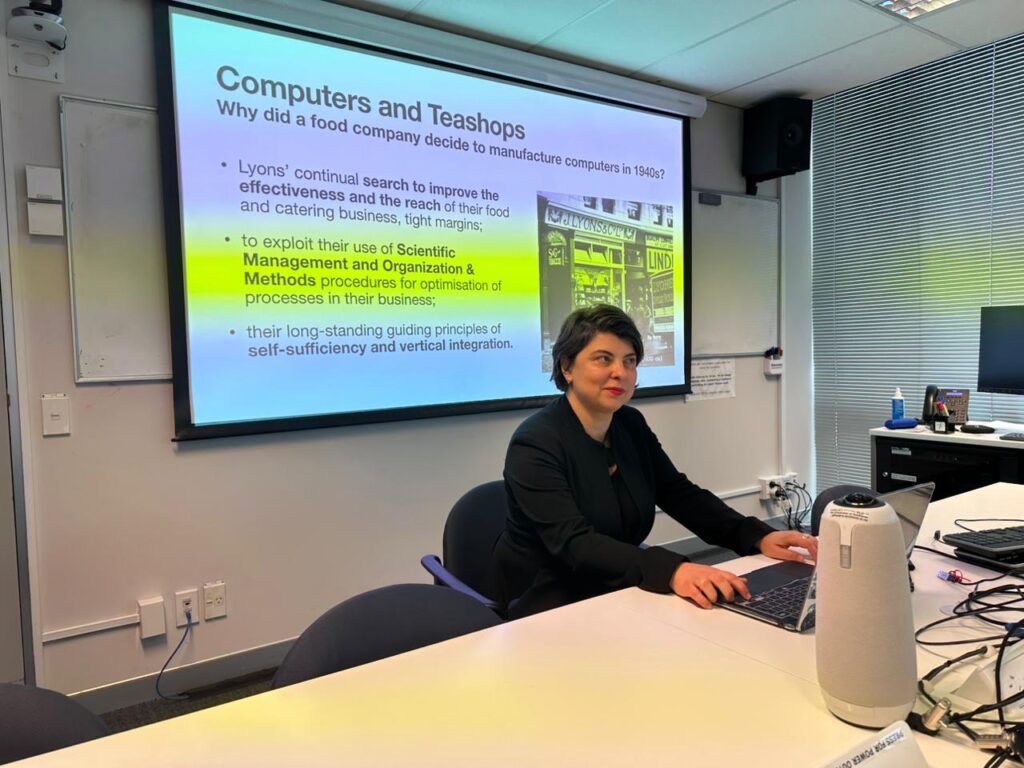
A commission and its nationalist technicians: expertise and activities in the Brazilian IT field in the 1970s
Marcelo Vianna (Federal Institute of Education Science and Technology of Rio Grande do Sul)
The history of Brazilian IT in the 1970s is influenced by the work of a group of specialists who occupied spaces in university and technocratic circles to propagate ideas of technological autonomy from the Global North. In this sense, there is a consensus that an elite of this group, acting in the Commission for the Coordination of Electronic Processing Activities (CAPRE), managed to establish a national Informatics policy, giving rise to an indigenous computer industry at the end of the decade. However, there is still much to be explored about the dynamics surrounding CAPRE’s different activities and the profile of its “ordinary” technicians, considering the breadth of attributions that the small body assumed in structuring the Brazilian IT field. Our proposal is to map them by combining prosopography and identifying the concepts, cultures and practices that guided its actions, such as the ideas of “rationalization” and “technological nationalism” and the establishment of a technopolitical network with the technical-scientific community of the period, including the first political class associations in the field of Computer Science. The paper will discuss the composition of the group and its expertise and trajectories, as well as the main actions of the technicians aimed at subsidizing CAPRE’s decision-makers. In this sense, the considerable degree of cohesion between technicians and its leaders ensured that an autonomous path was established for Informatics in the country, even though they were exposed to the authoritarian context of the period, which led to CAPRE itself being extinguished in 1979.
People of the Machine: Seduction and Suspicion in U.S. Cold War Political Computing
Joy Rohde (University of Michigan)
The computational social scientific projects of the Cold War United States are known for their technocratic and militarized aspirations to political command and control. Between the 1960s and the 1980s, Defense officials built systems that sought to replace cognitively limited humans with intelligent machines that claimed to predict political futures. Less familiar are projects that sought to challenge militarized logics of command and control. This paper shares the story of CASCON (Computer-Aided System for Handling Information on Local Conflicts), a State Department-funded information management system that mobilized the qualitative, experiential knowledge and political acumen of diplomats to challenge U.S. Cold War logics, like arms trafficking and unilateral interventionism. The system’s target users—analysts in the Arms Control and Disarmament Agency and the State Department tasked with monitoring conflicts in the global South—were notoriously skeptical of the Pentagon’s militarism and computational solutionism. Yet users ultimately rejected the system because it did tell them what to do! Despite their protestations, they had internalized the command and control logics of policy computing.
CASCON was an early effort to design around the contradictions produced by coexisting fears of human cognitive and information processing limits, on the one hand, and of ceding human agency and expertise to machines on the other. I conclude by arguing that CASCON reflects the simultaneous seduction and fear of the quest to depoliticize politics through technology—an ambivalence that marks contemporary computing systems and discourse as well.
AI in Nomadic Motion: A Historical Sociology of the Interplay between AI Winters and AI Effects
Vassilis Galanos (University of Stirling)
Two of the most puzzling concepts in the history of artificial intelligence (AI), namely the AI winter and the AI effect are mutually exclusive if considered in tandem. AI winters refer to the phenomenon of loss in trust in AI systems due to underdelivery of promises, leading to further stagnation in research funding and commercial absorption. The AI effect suggests that AI’s successful applications have historically separated themselves from the AI field by the establishment of new/specialised scientific or commercial nomenclature and research cultures. How do AI scientists rebrand AI after general disillusionment in their field and how do broader computer science experts brand their research as “AI” during periods of AI hype? How does AI continue to develop in periods of “winter” in different regions’ more pleasant climates? How do periods of AI summer contribute to future periods of internet hype during their dormancy? These questions are addressed drawing from empirical research into the historical sociology of AI, a 2023 secondary analysis between technological spillages and unexpected findings for internet and HCI research during periods of intense AI hype (and vice versa, AI advancements based on periods of internet/network technologies hype), as well as a 2024 oral history project on AI at Edinburgh university and the proceedings of the EurAI Workshop on the History of AI in Europe during which, several lesser known connections have been revealed. To theorise, I am extending Pickering/Deleuze and Guattari’s notion of nomadic science previously applied to the history of mathematics and cybernetics.
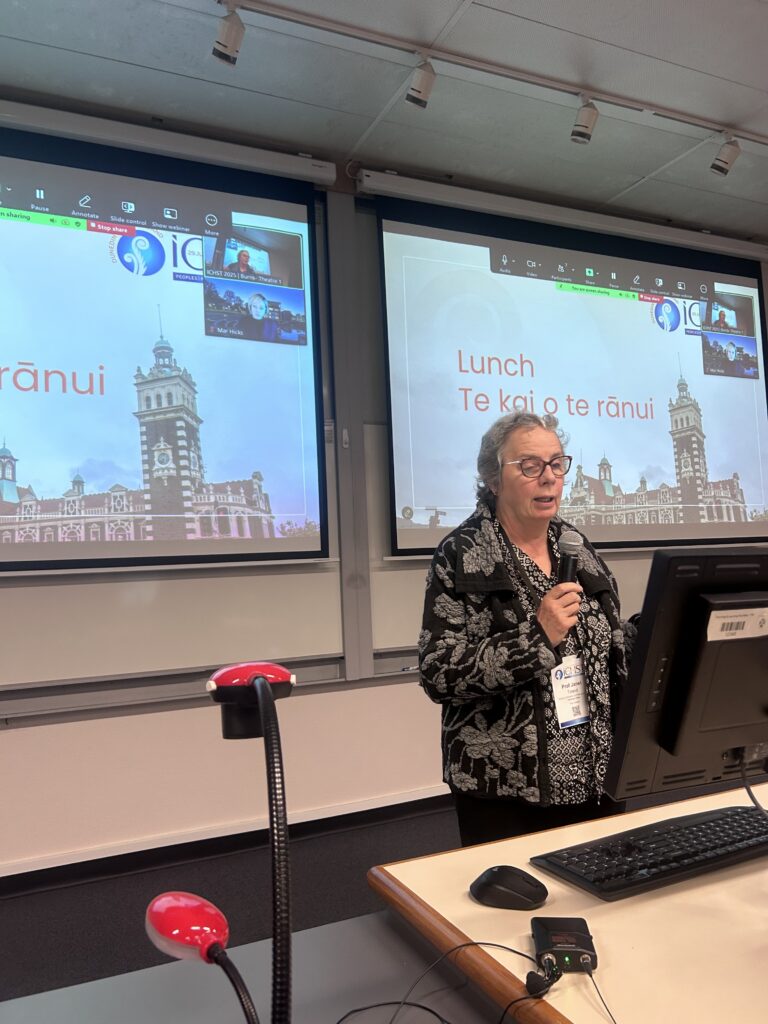
Vector and Raster Graphics : Two Pivotal Representation Technologies in the Early Days of Molecular Graphics
Alexandre Hocquet and Frédéric Wieber (Archives Poincaré, Université de Lorraine), Alin Olteanu (Shanghai University), Phillip Roth (Käte-Hamburger-Kolleg “Cultures of Research” RWTH Aachen)
https://poincare.univ-lorraine.fr/fr/membre-titulaire/alexandre-hocquet
Our talk investigates two early computer technologies for graphically representing molecules – the vector and the raster display – and traces their technical, material, and epistemic specificity for computational chemistry, through the nascent field of molecular graphics in the 1970s and 1980s. The main thesis is that both technologies, beyond an evolution of computer graphics from vector to raster displays, represent two modes of representing molecules with their own affordances and limitations for chemical research. Drawing on studies in the media archaeology of computer graphics and in history of science as well as primary sources, we argue that these two modes of representing molecules on the screen need to be explained through the underlying technical objects that structure them, in conjunction with the specific traditions molecular modeling stems from, the epistemic issues at stake in the involved scientific communities, the techno-scientific promises bundled with them, and the economic and industrial landsape in which they are embedded.
Erring Humans, Learning Machines: Translation and (Mis)Communication in Soviet Cybernetics and AI
Ksenia Tatarchenko (John Hopkins University)
This paper centers on translation in Soviet cybernetics and AI. Focusing on cultural practices of translation and popularization as reflected in widely-read scientific and fictional texts, I interrogate practices of interpretation in relation to the professional virtue of scientific veracity as well as its didactic function in the Soviet cybernetic imaginary throughout the long Thaw. The publication of the works of Norbert Wiener, Alan Turing, and John von Neumann in Russian was not simply aimed at enabling direct access to the words and thoughts of major bourgeois thinkers concerned with automation and digital technologies: translating and popularizing cybernetics in the post-Stalinist context was about establishing new norms for public disagreement. No longer limited to the opposition of true and false positions, the debates around questions such as “Can a machine think?” that raged across a wide spectrum of Soviet media from the late 1950s to the 1980s were framed by an open-ended binate of what is meaningful or, on the contrary, meaningless. In his classic 1992 book The Human Motor: Energy, Fatigue, and the Origins of Modernity, Anson Rabinbach demonstrates how the utopian obsession with energy and fatigue shaped social thought in modern Europe. In a similar line, this project explores how human error takes on a new meaning when the ontology of information central to Western cybernetics is adopted to a Soviet version of digital modernity.
Tech Disruptors, Then and Now
Mar Hicks (University of Virginia)
This paper explores the connected histories of whistleblowers and activists who worked in computing from the 1960s through the present day, showing how their concerns were animated by similar issues, including labor rights, antiracism, fighting against gender discrimination, and concerns regarding computing’s role in the military-industrial complex. It looks at people who tried to fight the (computer’s) power from within the computing industry, in order to write an alternative history of computing.

Nosebleed Techno, Sound Jams and Midi Files: the Creative Revolution of Australian Musicians in the 1990s through AMIGA Music Production.
Atosha McCaw (Swinburne University of Technology, Melbourne)
This paper looks at the innovative use of the AMIGA computer by Australian musicians in the 1990s, highlighting its role as a cost-effective tool for music production, experimentation, and collaboration. By examining how these artists harnessed the power of this technology to share files and rapidly materialize creative concepts, we uncover a fascinating chapter in the evolution of electronic music in Australia.
Computers and Datasets as Sites of Political Contestation in an Age of Rights Revolution: Rival Visions of Top-Down/Bottom-Up Political Action Through Data Processing in the 1960s and 1970s United States
Andrew Meade McGee (Smithsonian Air and Space Museum)
As both object and concept, the electronic digital computer featured prominently in discussions of societal change within the United States during the 1960s and 1970s. In an era of “rights revolution,” discourse on transformative technology paralleled anxiety about American society in upheaval. Ever in motion, shifting popular conceptualizations of the capabilities of computing drew comparisons to the revolutionary language of youth protest and the aspirations of advocacy groups seeking full political, economic, and social enfranchisement. The computer itself – as concept, as promise, as installed machine – became a contested “site of technopolitics” where political actors appropriated the language of systems analysis and extrapolated consequences of data processing for American social change. Computers might accelerate, or impede, social change.
This paper examines three paradigms of the computer as “a machine for change” that emerge from this period: 1) One group of political observers focused on data centralization, warning of “closed worlds” of institutional computing that might subject diverse populations to autocratic controls or stifle social mobility; 2) In contrast, a network of social activists and radicals (many affiliated with West Coast counterculture and Black Power movements) resisted top-down paradigms of data centralization and insisted community groups could seize levers of change by embracing their own forms of computing. 3) Finally, a third group of well-meaning liberals embraced the potential of systems analysis as a socially-transformative feedback loop – utilizing the very act of data processing itself to bridge state institutions and local people, sidestepping ideological, generational, or identity-based conflict.
Computing a Nation: Science-Technology Knowledge Networks, Experts, and the Shaping of the Korean Peninsula (1960-1980)
Ji Youn Hyun (University of Pennsylvania)
This paper presents a history of the ‘Systems Development Network’ (SDN), the first internet network in Asia established in 1982, developed in South Korea during the authoritarian presidency of Park Chung-Hee (1962-1979). I examine scientists and engineers who were repatriated under Park’s Economic Reform and National Reconstruction Plan to reverse South Korea’s ‘brain-drain’, re-employed under government sponsored research institutions, and leveraged to modernize state industrial manufacturing.
Pioneered by computer scientist Kilnam Chon, often lauded as ‘the father of East Asia’s internet’, a transnationally trained group of experts at the Korea Institute of Electronics Technology (KIET) developed the nation’s internet infrastructure, despite repeated government pushback and insistence on establishing a domestic computer manufacturing industry. Drawing on the Presidential Archive and National Archives of Korea, I describe how the SDN manifested through a lineage of reverse-engineering discarded Cheonggyecheon black market U.S. Military Base computer parts, prototyping international terminal and gateway connections, and “extending the instructional manual” of multiple microprocessors.
The reconfiguration of computer instructional sets are one of many cases of unorthodox, imaginative, and off-center methods practiced in Korea to measure up and compete with Western computing. Although repatriated scientists were given specific research objectives and goals, their projects fundamentally materialized through a series of experimental and heuristic processes. This paper will illuminate South Korea’s computing history, which until now has not been the subject of any history, and also allow a broader reflection on the transformation of East Asia during the Cold War––highlighting political change through the development of computing.

Collecting Data, Sharing Data, Modeling Data: From Adam and Eve to the World Wide Web within Twenty Years
Barbara Hof (University of Lausanne)
Much like physicists using simulations to model particle interactions, scientists in many fields, including the digital humanities, are today applying computational techniques to their analysis and research and to the study of large data sets. This paper is about the emergence of computer networks as the historical backbone of modern data sharing systems and the importance of data modeling in scientific research. By exploring the history of computer data production and use in physics from 1990 back to 1970, when the Adam & Eve scanning machines began to replace human scanners in data collection at CERN, this paper is as much about retelling the story of the invention of the Web at CERN as it is about some of the technical, social and political roots of today’s digital divide. Using archival material, it argues that the Web, developed and first used at physics research facilities in Western Europe and the United States, was the result of the growing infrastructure of physics research laboratories and the need for international access to and exchange of computer data. Revealing this development also brings to light early mechanisms of exclusion. They must be seen against the backdrop of the Cold War, more specifically the fear that valuable and expensive research data at CERN could be stolen by the Soviets, which influenced both the development and the restriction of data sharing.
Differing views of data in Aotearoa: the census and Māori data
Daphne Zhen Ling Boey and Janet Toland (Victoria University of Wellington | Te Herenga Waka)
This presentation explores differing concepts of “data” with respect to the Indigenous Māori people of Aotearoa and colonial settlers. A historical lens is used to tease out long-term power imbalances that still play out in the data landscape today. Though much data has been collected about Māori by successive governments of New Zealand, little benefit has come to Māori themselves.
This research investigates how colonisation impacted Māori, and the ongoing implications for data. The privileging of Western approaches to harnessing the power of data as opposed to indigenous ways stems from colonisation – a system that results in “a continuation of the processes and underlying belief systems of extraction, exploitation, accumulation and dispossession that have been visited on Indigenous populations.”
We examine the census, an important tool that provides an official count of the population together with detailed socioeconomic information at the community-level and highlight areas where there is a fundamental disconnect between the Crown and Māori. Does Statistics New Zealand, as a Crown agency, have the right to determine Māori ethnicity, potentially undermining the rights of Māori to self-identify? How do differing ways of being and meaning impact how we collect census data? How does Aotearoa commit to its Treaty obligations to Māori in the management and optimisation of census data? We also delve into Māori Data Sovereignty, and its aim to address these issues by ensuring that Māori have control over the collection, storage and use of their own data as both enabler of self-determination and decolonisation.
History of computing from the perspective of nomadic history. The case of the hiding machine
Liesbeth De Mol (CNRS, UMR 8163 Saviors, Textes, Langage, Université de Lille)
Computing as a topic is one that has moved historically and methodologically through a variety of disciplines and fields. What does this entail for its history? The aim of this talk is to provoke a discussion on the future of the history of computing. In particular, I use a notion of so-called nomadic history. This is in essence the idea to identify and overcome ones own disciplinary and epistemological obstacles by moving across a variety of and sometimes conflicting methods and fields. I apply the method to the case of the history of the computer-as-a-machine which is presented as a history of hide-and-seek. I argue that the dominant historical narrative in which the machine got steadily hidden away behind layers of abstraction needs countering both historically as well as epistemologically. It is based on a collaboratively written chapter for the forthcoming book “What is a computer program?”.

Modeling in history: using LLMs to automatically produce diagrammatic models synthesizing Piketty’s historiographical thesis on economic inequalities
Axel Matthey (University of Lausanne)
This research integrates theoretical digital history with economic history. Employing Large Language Models, we aim to automatically produce historiographical diagrams for analysis. Our experience with the manual production of historiographical diagrams suggests that LLMs might be useful to support the automatic generation of such historiographical diagrams which aim at facilitating the visualization and understanding of complex historical narratives and causal relationships between historical variables. Our initial exploration involved using Google’s LLM (Gemini 1.5 Pro) and OpenAI’s GPT-4o to convert a concise historical article by Piketty into a simplified causal diagram. This article is A Historical Approach to Property, Inequality and Debt: Reflections on Capital in the 21st Century . LLMs have demonstrated remarkable capabilities in various domains, including understanding and generating code, translating languages, and even creating different creative text formats. We show that LLMs can be trained to analyze historical texts, identify causal relationships between concepts, and automatically generate corresponding diagrammatic models. This could significantly enhance our ability to visualize and comprehend complex historical narratives, making implicit connections explicit, and facilitating further exploration and analysis. Historiographical theories explore the nature of historical inquiry, focusing on how historians represent and interpret the past: in this research, the use of diagrams is being considered as a means to enhance the communication, visualization, and understanding of these complex theories.
Computational Illegalism
Luke Stark (Western University Canada)
In his analysis of the concept in his lectures on the development of the “punitive society,” Michel Foucault describes the eighteenth century as a period of “systematic illegalism,” including both lower-class or popular illegalism and “the illegalism of the privileged, who evade the law through status, tolerance, and exception” (Foucault 2015, 142). In this paper, I argue that illegalism has new utility as an analytic concept in the history of computing. Illegalism is a characteristic of both the business models and rhetorical positioning of many contemporary digital media firms. Indeed, such “computational illegalism” is so rife that commentators often seem to accept it as a necessary aspect of Silicon Valley innovation.
In this presentation, I describe illegalism as theorized by Foucault and others and develop a theory of platform illegalism grounded in the history of technical and business models for networked computing since the 1970s. This presentation is part of a larger project in which I document the prevalence of illegalism on the part of digital platforms in various arenas, focusing in particular on platform labor and generative AI; examine the range of responses to such illegalism from consumers, activists, and governments; and formulate recommendations regarding ways to account for platform illegalism in scholarly and activist responses as part of governance mechanisms for digitally mediated societies.
The datafied “enemy,” Computational work, and Japanese American incarceration during World War II
Clare Kim (University of Illinois Chicago)
Following the events of Pearl Harbor in December 1941, a series of U.S. presidential proclamations and executive orders authorized the legal designation and treatment of people of Japanese ancestry as “enemy aliens.” The designation of the US West Coast as military zones under Executive Order 9066 enabled the removal and subsequent incarceration of more than 120,000 Japanese Americans in internment camps. The problem of identifying, incarcerating, and managing Japanese enemy alien populations necessitated the treatment of these military zones and spaces as information environments, where the classification of Japanese and Japanese American residents as enemy alien, citizen, or an alternative subject position could be adjudicated. This paper explores how conflict in the Pacific theater of World War II contoured the entanglements between computational work and Asian and Asian Americans residing in the U.S., recounting the setup of statistical laboratories established to track and manage Japanese American incarceration. It reveals how datafication practices were collapsed and equated with bodies that were racialized as an enemy alien and yellow peril, which paradoxically effaced other subject positions to which Japanese Americans came to occupy at the time: in particular, the invisible labor to which they furnished to statistical work as technical experts themselves.
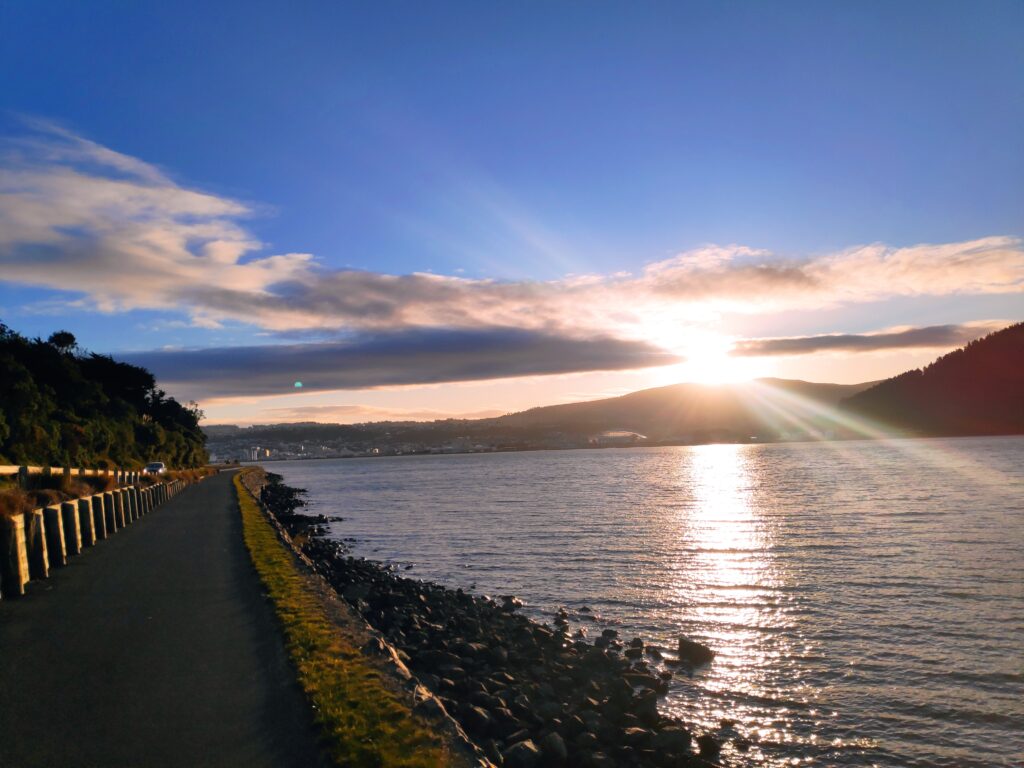
Hidden Futures. Work – Click and Crowds
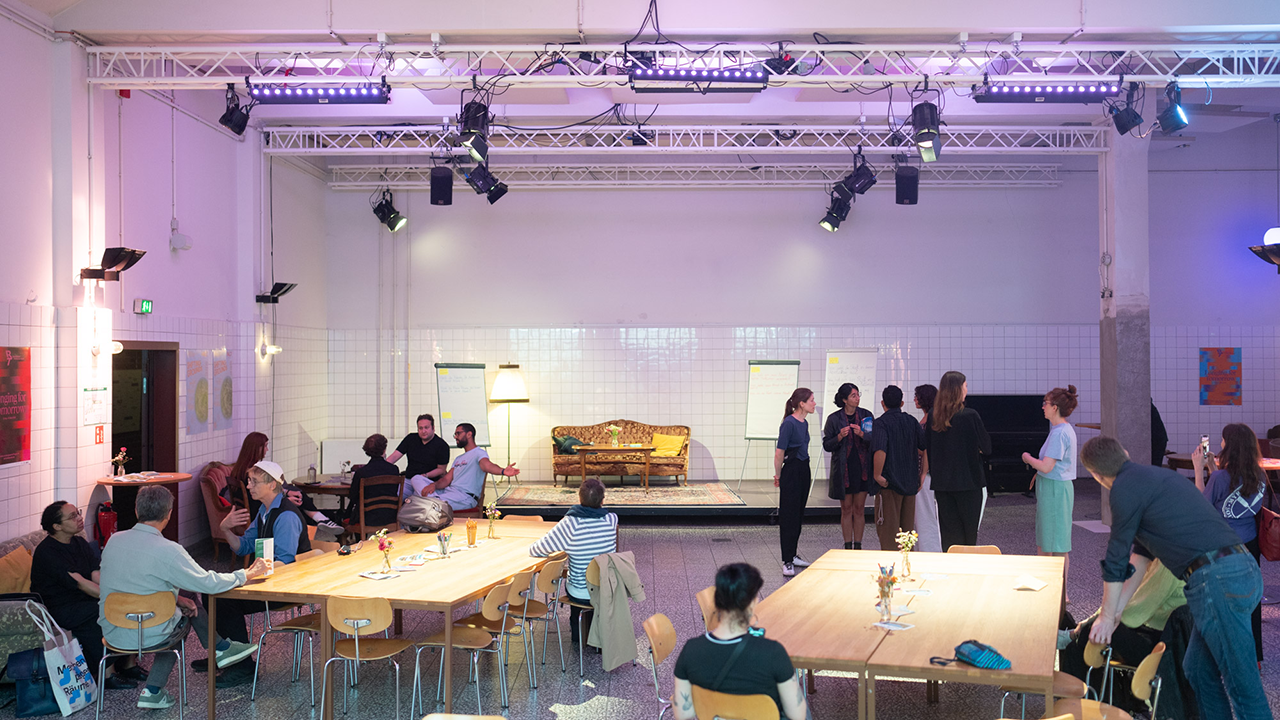
ANA MARÍA GUZMÁN
Which chain of work processes are triggered by a click in an app? Whose bodies are thereby set in motion and exposed to any weather conditions? And how do our cities change when work is no longer tied to spaces, but is controlled by an ephemeral architecture of routes, data and likes?
These questions were discussed on June 26, 2025, during the evening event “Hidden Futures. Work – Click and Crowds”, that was jointly organized by the KHK c:o/re and the performance center PACT Zollverein. The evening brought together people who work in the digital economy, in the context of app-based delivery services, logistics platforms, researchers of the care sector managed via apps, and an art collective researching the changes to the city when apps and start-ups take over.
In different formats, the materiality and invisibility of platform-guided work were discussed. The promise of services that can be delivered to the doorstep at any time has become part of everyday life. But at which cost? The event shed light on the precarious working conditions of employees who are becoming invisible through the digital interfaces of major platforms. It also addressed the forms of resistance and solidarity that emerge in the platform economy.
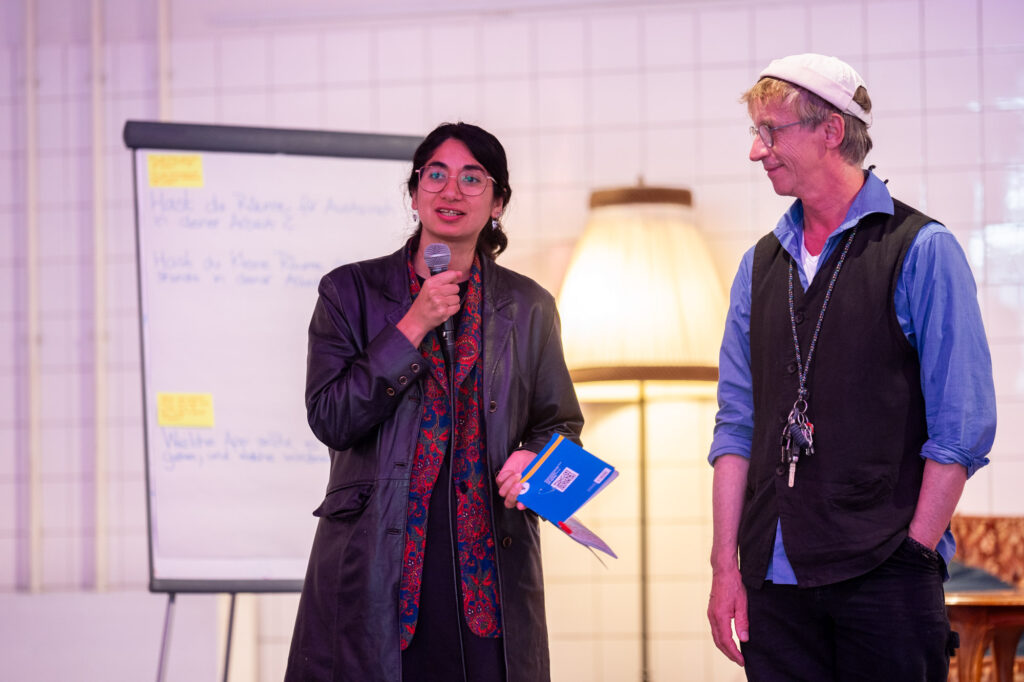
The event kicked off with introductory words by Juliane Beck and Stefan Hilterhaus from PACT Zollverein and Ana María Guzmán, event coordinator at the KHK c:o/re. The evening started by inviting the audience to reflect on the digitalization of work and the experience of the city, and situating them as workers themselves. They were asked to answer questions on three boards, such as: “What is the value of your work?”, “Is there space for resistance at your workplace?” and “How do you perceive the city on your way to work?”.
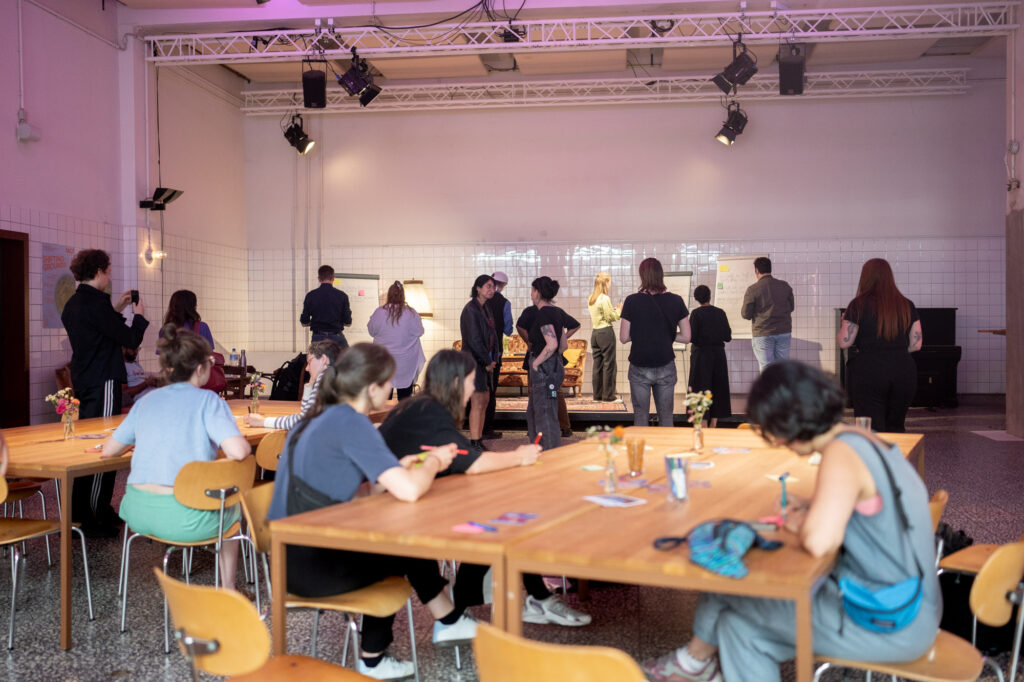
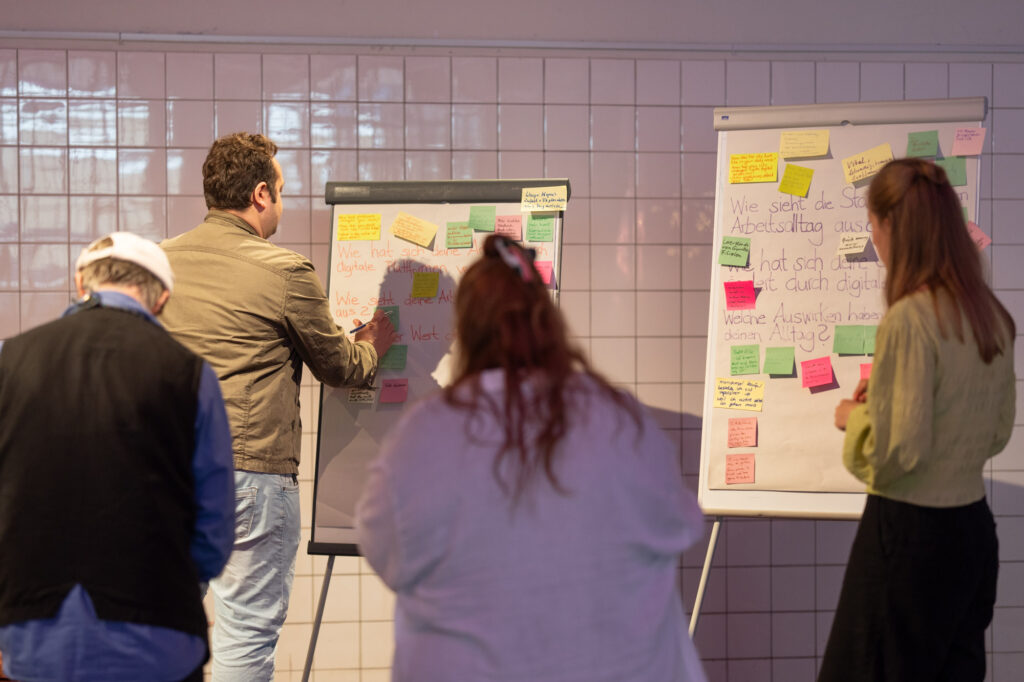
In the following talk, Janne Martha Lentz, research assistant and doctoral candidate at the University of Graz, spoke about the struggles of workers in the cleaning and care sector who are booked through an online platform, as well as the contrast between the public sphere of the internet and the private space of customers’ homes. This sector of the gig economy has specific challenges because it is not publicly regulated and consists mostly of invisible, female, and emotional labor. Unlike delivery service workers, cleaners are on their own when they arrive at strangers’ homes. Online and in other people’s homes, cleaners must deal with unspoken expectations, spatial control, and precarious working conditions. Intermediary platforms deliberately profit from and exacerbate existing inequalities: relationships of trust, personal networks, and responsibility are replaced by digital systems geared toward customer convenience — workers must be available and interchangeable.
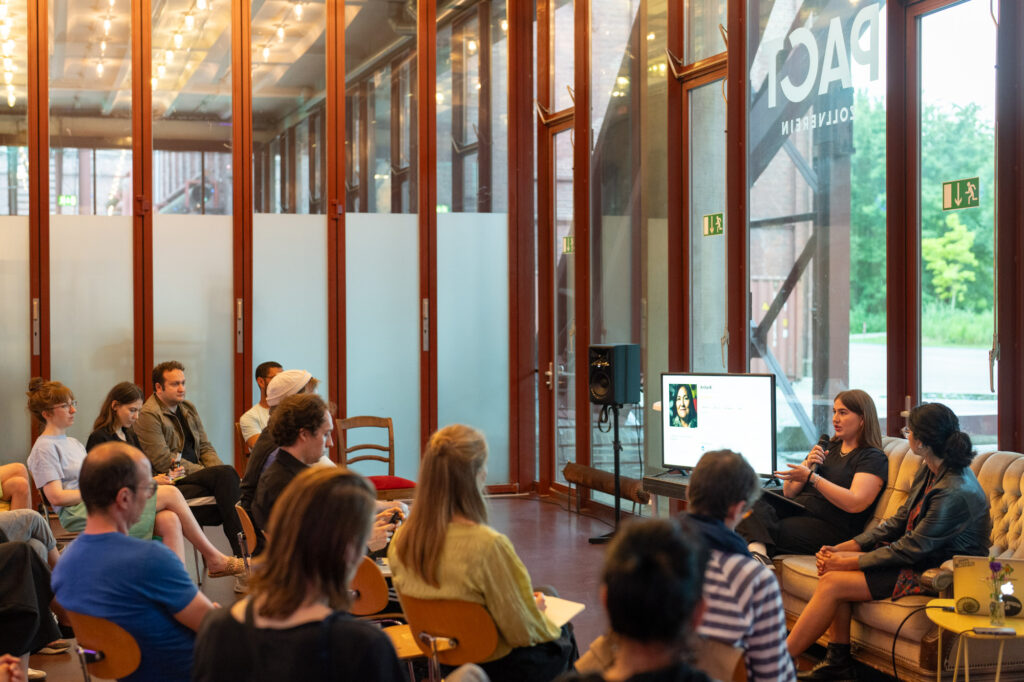
Jochen Becker, author, curator, lecturer and co-founder of metroZones – Center for Urban Affairs introduced their work on “City as Byte”, following the development of the so-called “creative industries” and its impact on cities. In several projects, the Center traces the influence of these industries on the city life through mapping, video, exhibition, or performance. The Center engages in critical urban research and examines current working and urban models. For instance, they have studied how companies like Amazon are altering the geography of cities. They ask if the ongoing expansion of platform economies has led to a new kind of architecture, with endless rows of delivery centers in the urban periphery and headquarters in the center? What is the connection between this topographical change and the reorganization of labor relations?
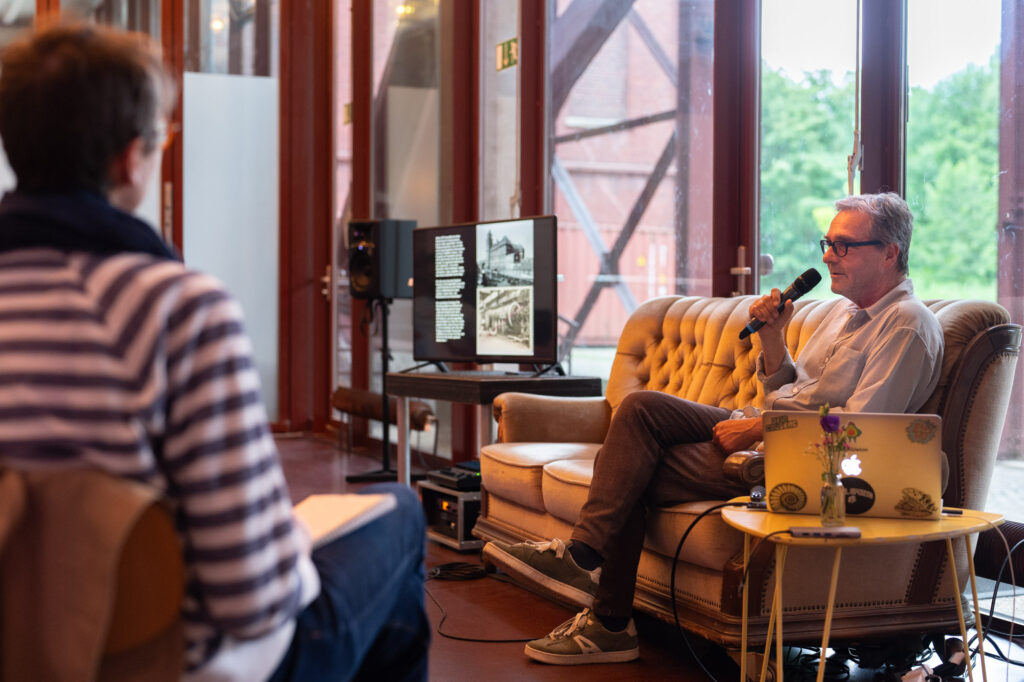
Last but not least followed a presentation by Sebastian Randerath, research associate in Digital Media Culture at the University of Bonn, Hedi Tounsi, council member at Amazon in Winsen (Luhe) and Semih Yalcin, Chairman of the General Works Council at Lieferando. In their lecture performance “How_to_resist.gpx”, they provided insights into everyday and organized resistance in platform-based warehouse and delivery work. They presented possibilities of resistance in working environments that make people disappear behind algorithmic tracking and discussed how solidarity can arise between jobs, apps, and chat groups. Drawing from their experiences working for app-based delivery services and Amazon, they critically shed light on the working conditions of delivery riders and precarious employees at big companies. They also presented a toolbox of different forms of resistance.
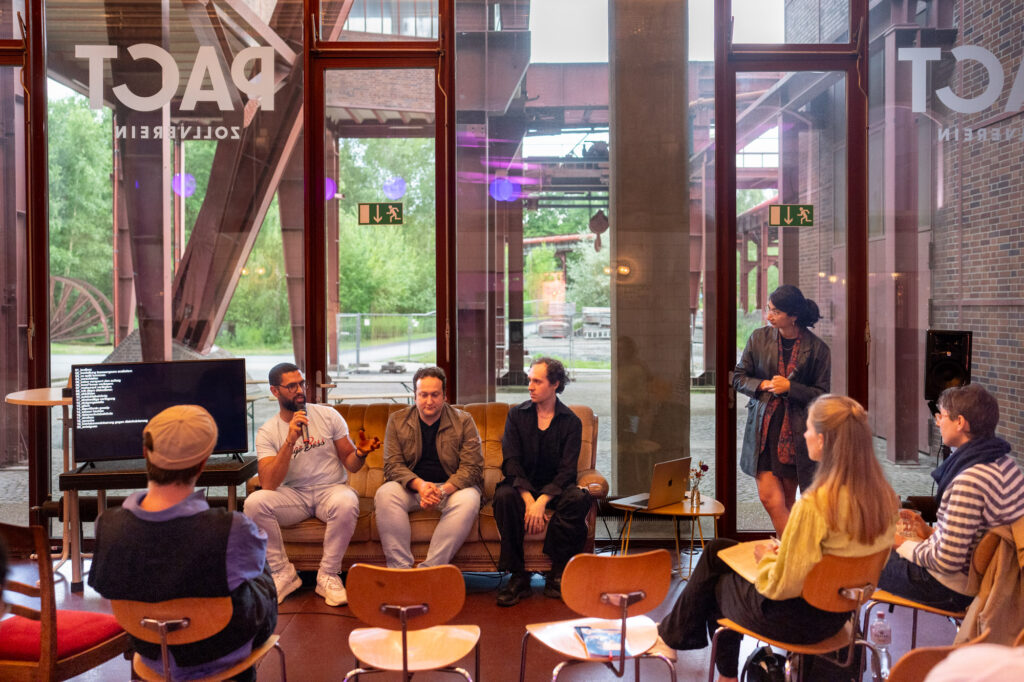
The event ended with an open exchange and a joint dinner, which offered an opportunity to further discuss the invisibility of data-driven work. It raised questions about the potential for emergent forms of resistance and solidarity in digital societies and the future of work. The event was also an opportunity to reflect on the materiality of data and data-driven economies. Data is material and inscribed in infrastructure, roads, cities, and the process of extracting it from bodies and labor.
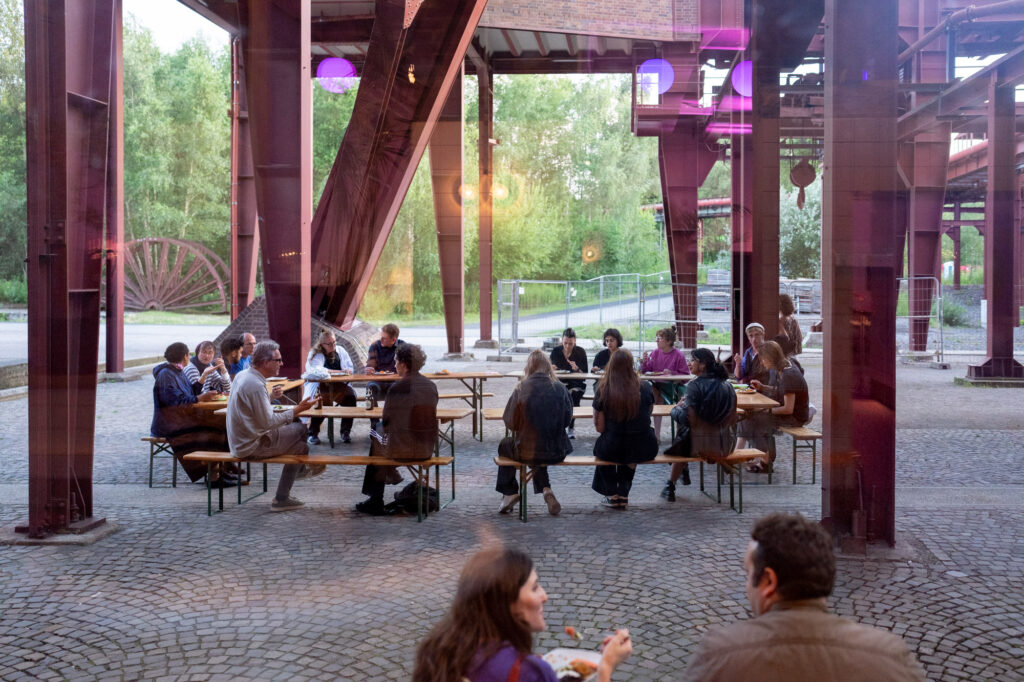
“Work – Clicks And Crowds” marks the start of the new series “Hidden Futures” at PACT, which is developed and organized in cooperation with the KHK c:o/re. The series focuses on the varieties of the future designed by science and technology and brings together social actors, researchers, and artists to generate aesthetic forms of understanding the complexity of digital society. The series explores new research methods to communicate the complexity of digital society together with artistic and research methods. It is part of our artistic research area and of varieties of science. Stay tuned for the next event in the series.
© Photos: Dirk Rose / PACT Zollverein
The Artwork Is the Network
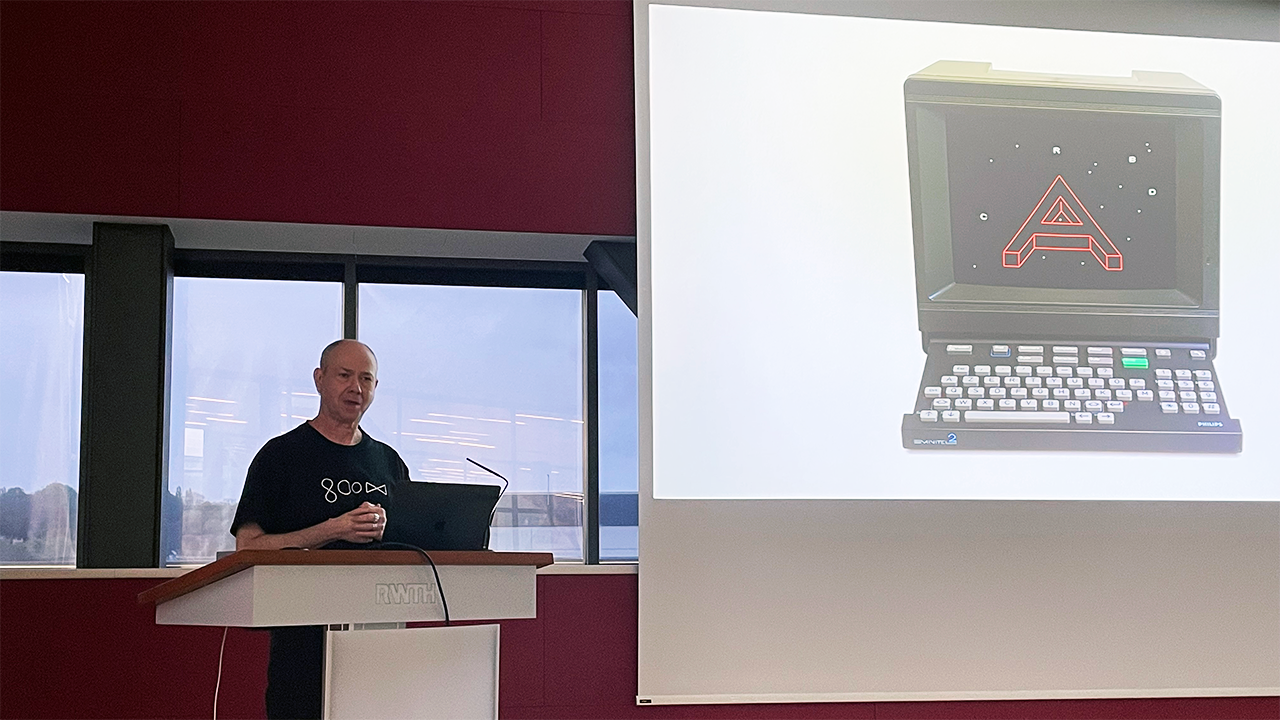
ARIANNA BORRELLI
The workshop “After Networks: Reframing Scale, Reimagining Connections”, organized by c:o/re Fellow Nathalia Lavigne, took as its starting point the increasing critiques to digital platforms as monopolizing and shaping networking according to economic interests, and so leading to a crisis of social interactions.
A key question at the meeting was whether and how artistic activities can help (re)imagine connections beyond digital social media, and artist Eduardo Kac was invited to present and reflect his work in this perspective. Given the critical stance of the workshop towards new technologies, Kac could at first appear as a strange choice, since his artworks, while of extremely diverse nature, all made use of what were at the time cutting-edge technologies, from early computer networks to space travel. Can we use technology to reach beyond Big-Tech-dominated networks? Let us seek the answer in Kac’s works as he presented them at the c:o/re event.
Eduardo Kac created his first artworks in Brazil in the early 1980s by manipulating the pixels on a computer screen, and had to work hard to have the results accepted as an art piece for an exhibit. Later, he artistically explored one of the first computer network: the French Minitel. In the 1980s, the French government had decided to kick-start one of the first forms of a nation-wide digital information network. Minitels were not personal computers, but videotex terminals with screen and keyboard: they could be loaned for free from the Post offices, plugged into the telephone network and so enabled to send or request information, access bulletin boards, book tickets, buy products – or view four works by Kac.
At the event, the artist showed us on a large screen an example of what the users would have seen on their Minitel viewer. In the work “Reabracadabra” (1985) colored lines slowly drew themselves from top down on the screen, and eventually became recognizable as the letter A, surrounded by small letters forming the word abracadabra. Even though Kac had shown us before a picture of the finished image, seeing it slowly emerge from the dark screen with a simple, but fluid motion was somehow surprising, as the effect was quite different form today’s digital imaging. Like all information received through the Minitel, the artwork could not be stored locally, and disappeared when the screen was cleared. In other words, the art existed in the connection, and only as long as the connection itself was there. Indeed, the original artworks disappeared for good when the French government finally switched off the Minitel network, but Kac had already been active to recover and reconstruct them, and so they could be displayed on original Minitel terminals at the exhibition “Electric Dreams. Art and Technology Before the Internet” (Tate Modern, London 28/11/24-1/6/25). Thus, the work also explores questions of the limits of archiving digital artworks, and lets us wonder how far a recreated network can support the “same” artwork.
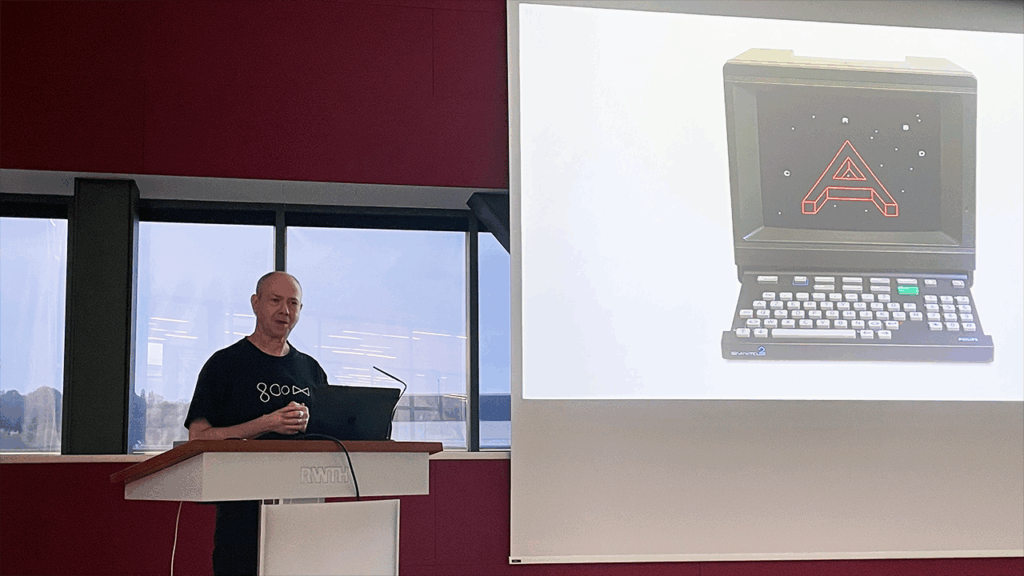
During the 1990s, the internet became a global phenomenon, but in the meantime Kac had become active in another technological outreach: biotechnologies. Other than the Minitel artworks, Kac’s creations in this field are quite well-known, especially the GFP Bunny (2000), a genetically engineered rabbit which glows in the dark. Its presentation gave rise to broad and intense media reactions which surprised its author and prompted him to embed them in new artworks. Kac pointed out that the pop-culture reaction to his work gave him the opportunity of opening a communication channel, where he would send implicit messages to companies, television shows and other agents quoting his work. This communication channel was a way to create networks via implicit messages, where the media is the globality of media and the artwork becomes the medium enabling communication. Kac also presented another example of art involving non-human life forms: “Essay Concerning Human Understanding” (1994), in which a bird and a plant are enabled to communicate in a bio-technological environment and so generate art for each other. Here, technology and human actors become a network for the creation and consumption of art on the part of non-human creatures.

The final works Kac discussed at the workshop turned to yet another cutting-edge technology: space travel. With the cooperation of NASA since the early Noughties, Kac placed artworks in space, and one of them, a cubic, laser-engraved glass sculpture named “Adsum”, lies today in the Mare Crisium, a crater on the Moon’s face always visible from Earth. Yet these are “only” earthly artworks placed in space: the next creation Kac showed us in his presentation was an artwork produced in space to be consumed in space. “Inner Telescope“ is a technologically minimal creation made out of two standard sheet of paper by using only the bare hands and a pair of scissors. The hands were not those of the artist, though, but of French astronaut Thomas Pesquet who, following Kac’s instructions, produced the artwork during his stay in the International Space Station (ISS) in 2017. Looking like an M pierced by a tube, the work on Earth would only clumsily and formlessly slump onto a surface, but under zero gravity it floats lightly against the backdrop of the earthly blue marble: the first native outer space artwork. Who is the artist here: Kac, the astronaut, the zero gravity environment – or maybe NASA? Clearly, this question makes little sense, as the work highlights what was already implicit in the previous ones, namely the number factors and actors which combine to produce a work of art, blurring the distinction between creators and consumers, and letting them all appear as nodes in a live artistic network. Kac’s creative impulse takes the role of an enabler, setting up a bio-physical-technological network and artwork.
Let us now go back to the initial question: Can we use technology to reach beyond Big-Tech-dominated networks? Kac’s works show that this may be possible by highlighting how artworks, however technologically based, are never made out of technology, but of the situated entities communicating through it, be they humans on earth or space, animals or plants, or paper floating in space. In a similar way, we might go beyond today’s social networks not by rejecting them, but by becoming aware that their digital technology does not constitute a new, magical network for us to live in, but is only an additional factor enabling life forms in the universe to live out their inner potential for connection. We are the network, if we so imagine ourselves.
Artistic Research Part 3: “The process can give depth to the final work, while the work can visualize the questions raised during the process”
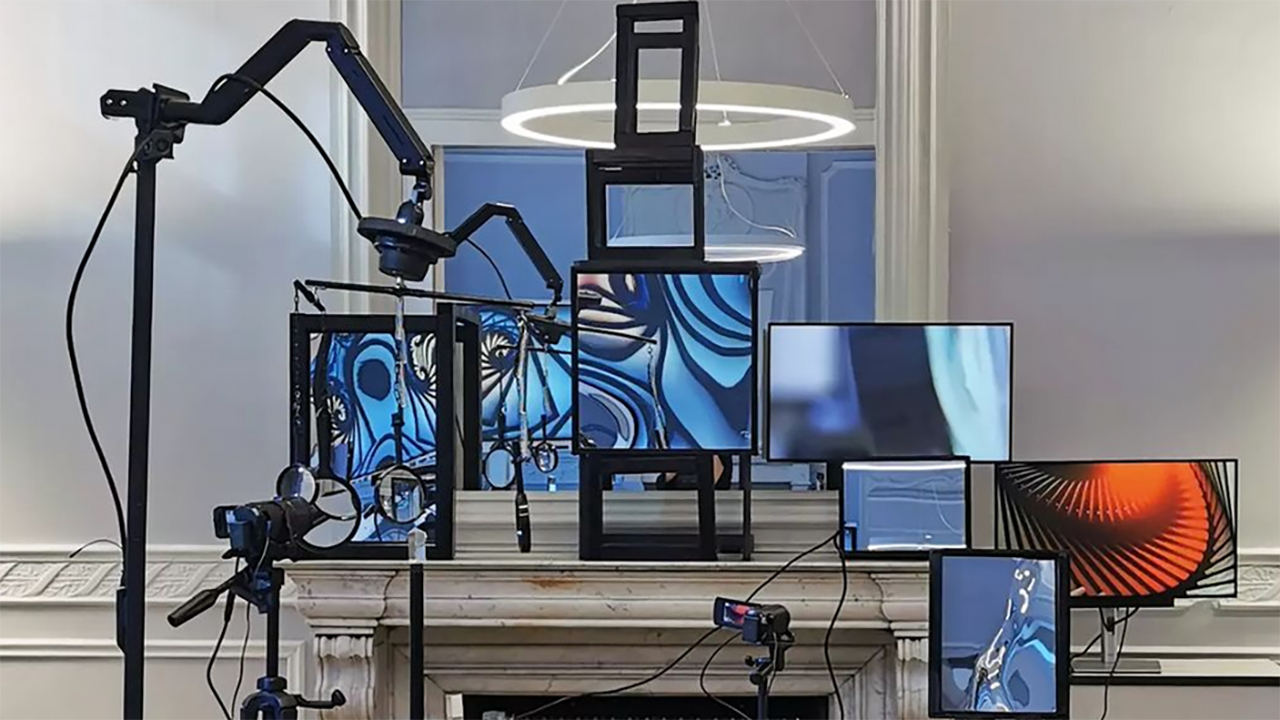
At the KHK c:o/re, the practice of artistic research has always been part of our research interests. For this reason, we invite fellows working closely with the arts in each fellow cohort. In the past four years, we have realized various projects in collaboration with art scholars and practitioners, and different cooperation partners, ranging from artistic positions in the form of performance, installation, discourse, and sound. Many of these events were part of the center’s transfer activities to make the research topics and interests visible, relatable, and tangible. In this sense, art can be seen as a translation for scientific topics. But the potential of the interaction between science and art doesn’t end there. Art is more than a tool for science communication, it is a research culture. Therefore, we ask the following questions: What kind of knowledge is generated in artistic production? How are these types of knowledge lived in artistic research? And, in combination with one of the central research fields of the center: To what extent are artistic approaches methodologies for what we understand as expanded science and technology studies?
To get closer to answering these questions, we talked to some of our fellows who are working closely with the arts and researching the connection between science and art. We want to find out about the epistemic value of artistic research, the methodologies and institutional boundaries of artistic research in an academic environment, and how they implement artistic research in their research areas.
In this edition of the interview series, we spoke to KHK c:o/re alumni fellow Masahiko Hara.
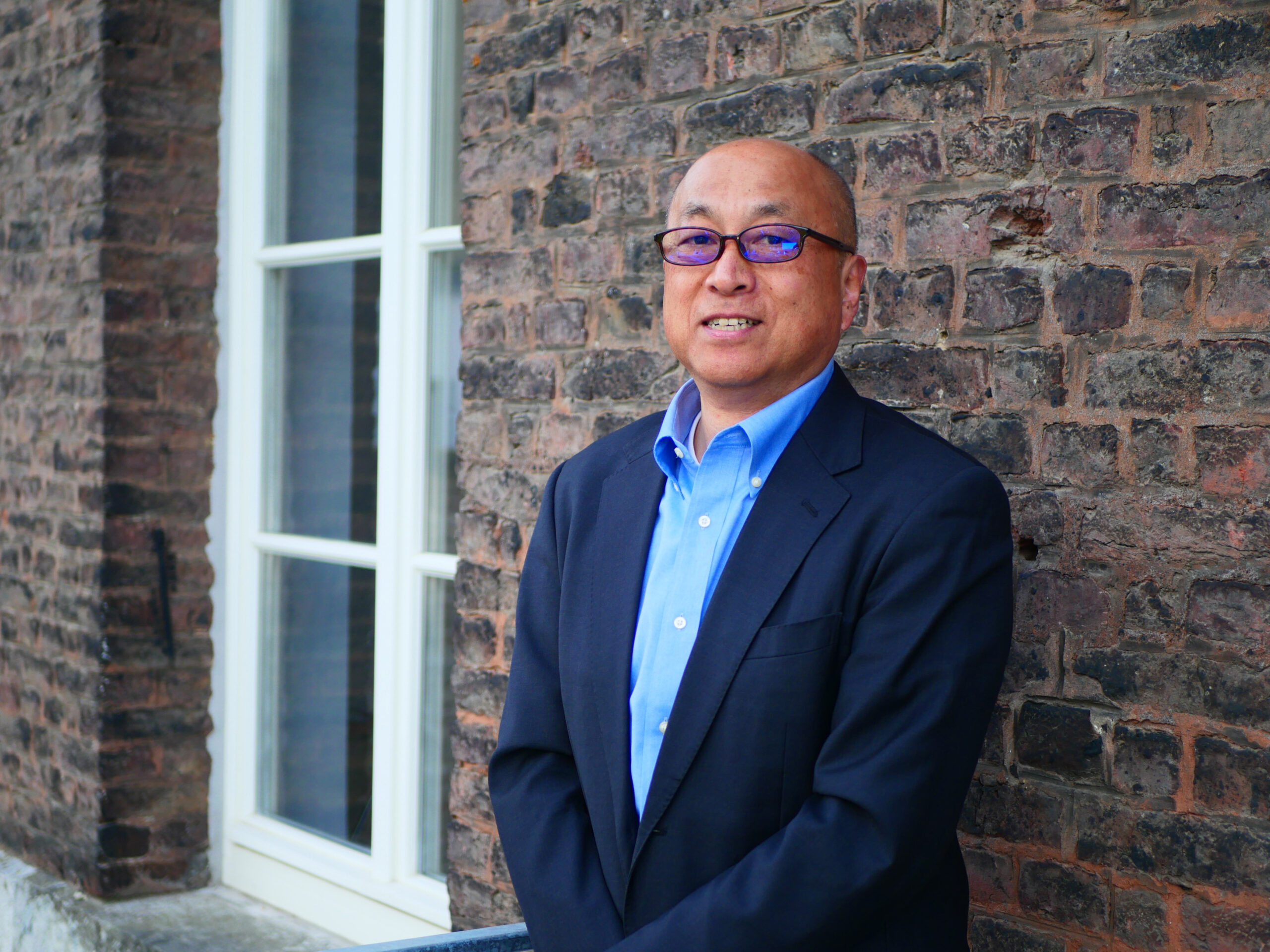
Masahiko Hara
Masahiko Hara is an engineer and Professor Emeritus of Tokyo Tech, Japan. His research interests are in the areas of Nanomaterials, Nanotechnology, Self-Assembly, Spatio-Temporal Fluctuation and Noise, Ambiguity in Natural Intelligence, Bio-Computing, Chemical Evolution, Origins of Life, and Science and Art Installation.
KHK c:o/re: What do you think is the epistemological value of artistic research?
Masahiko Hara: Artistic research expands the diversity of “knowing” by exploring sensory and embodied experiences, as well as aspects of “tacit knowledge” that are difficult to verbalize. It offers an alternative approach to phenomena that cannot be fully grasped by the theories and data-driven frameworks centered on “explicit knowledge”, which are prioritized in contemporary science and technology.
Historically, philosophy and physics (here referring to the natural sciences) were two sides of the same coin. However, as they developed separately in the 20th century, there arose a need for a new metaphysics — a kind of metaphysical translation that could bridge the gap. I believe this is where the value of artistic research lies:
- Contribution to diverse forms of knowledge
- Reframing how questions are asked
- Critically reflecting on how we know
- Emphasizing experience and relationality
What specific methodologies are used in artistic research? Can you give an example?
Certainly, I believe the science-art installation experiments we are conducting represent a cutting-edge methodology in artistic research. Other examples include performances, participatory projects, and experimental creations using bio-materials, for example.
I have conducted “scientist-in-residence” projects that explore experimental creation at the intersection of science and art — such as computation using slime mold amoebas and experiments on crowd psychology and social group dynamics. Each of these projects is still in a “prototype” phase, but I feel that this very process of trial and error itself constitutes a new methodology.
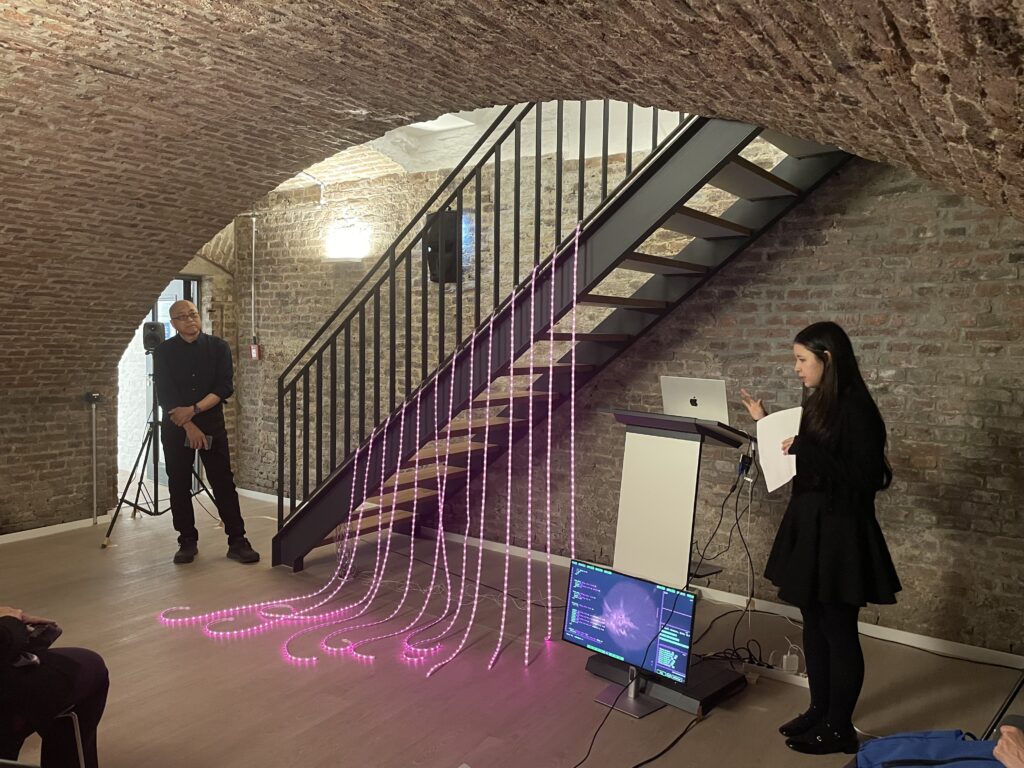
How do product-oriented art forms such as exhibitions or installations differ from process-oriented approaches to art? Is there a hierarchy? How do these approaches influence each other?
Product-oriented approaches focus on a “finished form” to be delivered to the audience, while process-oriented approaches value the creative process and trial-and-error itself (I think installations are not categorized in the product-oriented art, but rather process-oriented). There is no hierarchy between the two; rather, they are complementary. The process can give depth to the final work, while the work can visualize the questions raised during the process. Interestingly, from my viewpoint, both science and art today, established in the 20th century, have product-oriented tendencies. In both cases, it’s about delivering something complete — whether a published paper or a finished artwork — to the audience.
What is also notable is that in Asian ways of thinking, there tends to be a greater appreciation for the effort and process leading up to a goal, rather than just for “winning” at the Olympics or World Cup, for example. Unfinished processes, or those not yet reaching a goal, can themselves generate new value, especially in the form of installation experiments in both science and art. In this sense, when we talk about “mutual influence”, I believe that the idea of “incomplete completeness” in both product-oriented and process-oriented approaches could be coupled and give rise to new forms of emergence.
Is there a specific aesthetic that characterizes artistic research? Like trends or movements?
I think the aesthetics of artistic research lie in its attitudes, such as reexamining how questions are framed and embracing uncertainty. As for trends, I believe artistic research challenges the very foundation of aesthetics itself: it prompts us to ask what beauty is, whether universal beauty exists, and so on. In both science and art, within the larger environment of the universe we inhabit, the pursuit of true beauty and exploration of its methodologies is becoming increasingly relevant.
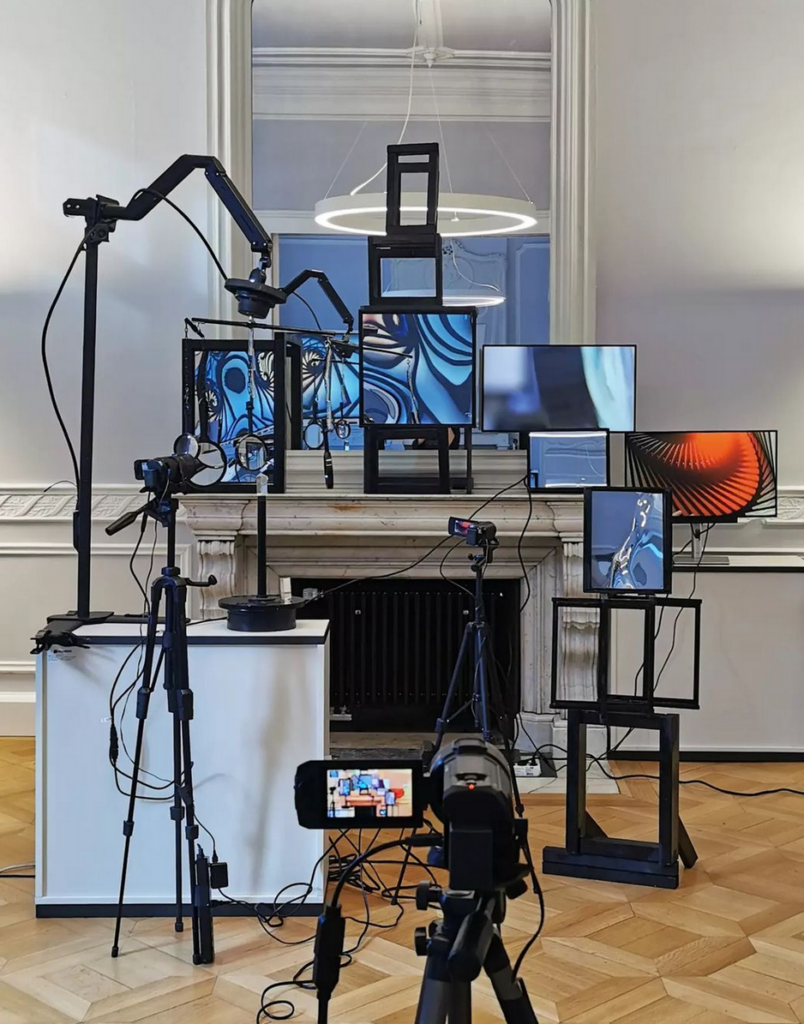
What are the problems and challenges of artistic research in an academic environment?
Some problems and challenges include the mismatch between evaluation criteria in science and art, the difficulty of “making outcomes visible,” and the gap between academic and artistic modes of expression. The open-ended, tacit nature of artistic processes often conflicts with the demand for codified, explicit knowledge in academic evaluation systems.
However, I believe that this very sense of “discrepancy” is one of the most important issues. It is precisely because this friction exists that artistic research, especially of a metaphysical nature, becomes meaningful.
What does “experimenting” mean in the case of artistic research, perhaps in contrast to the usual scientific methods?
In science, experiments emphasize reproducibility and control. In contrast, in artistic research, an experiment is an “open-ended attempt” that unfolds through unexpected discoveries, chance, and relationships with observers. Failure, deviation, and ambiguity are also essential components. Both fields involve emergence, but to exaggerate slightly, scientific experiments aim to discover phenomena and possibilities that already exist in the universe, whereas experiments in artistic research may invent phenomena and possibilities that have never existed before. They may offer answers that cannot be generated by machine learning and big data.
Do art and science have different forms of knowledge production?
Yes, unfortunately, based on the developments of the 20th century, the answer is currently yes. Science has sought universal knowledge through analysis and systematization, while art has produced individual, experiential forms of knowledge. The former values reproducibility, while the latter considers identical outcomes by different people to be banal. This again mirrors the divide between philosophy and physics. That said, while the two differ, they are fundamentally complementary forms of knowledge.
One interesting point is that artworks sometimes grasp truths that science has not yet addressed. Artists often aren’t aware they are engaging with scientifically significant perspectives. Conversely, scientists often don’t believe that artists are doing such things. Our goal, through our science-art installation experiments, is to repair and bridge this gap or missing link, reconnecting philosophy and physics into a healthy and cyclical relationship.
Artistic Research Part 2: “[A]rt and science are not distinct domains, but are intertwined practices”
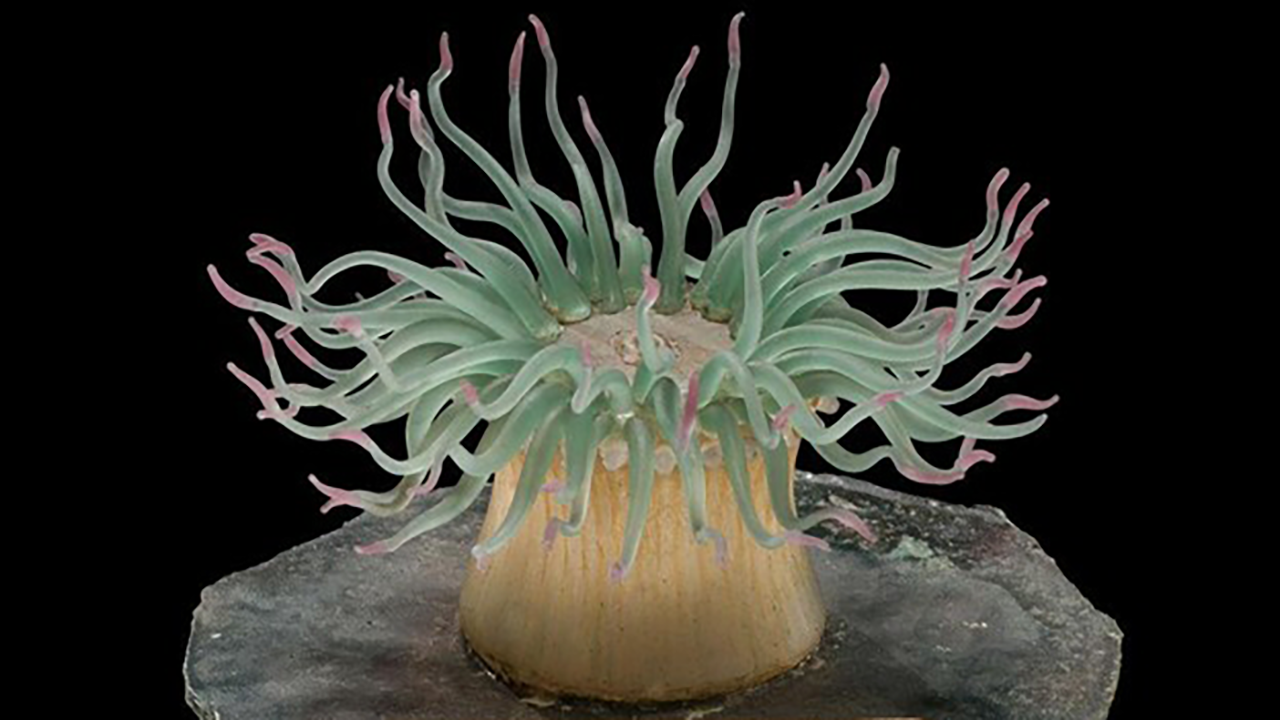
At the KHK c:o/re, the practice of artistic research has always been part of our research interests. For this reason, we invite fellows working closely with the arts in each fellow cohort. In the past four years, we have realized various projects in collaboration with art scholars and practitioners, and different cooperation partners, ranging from artistic positions in the form of performance, installation, discourse, and sound. Many of these events were part of the center’s transfer activities to make the research topics and interests visible, relatable, and tangible. In this sense, art can be seen as a translation for scientific topics. But the potential of the interaction between science and art doesn’t end there. Art is more than a tool for science communication, it is a research culture. Therefore, we ask the following questions: What kind of knowledge is generated in artistic production? How are these types of knowledge lived in artistic research? And, in combination with one of the central research fields of the center: To what extent are artistic approaches methodologies for what we understand as expanded science and technology studies?
To get closer to answering these questions, we talked to some of our fellows who are working closely with the arts and researching the connection between science and art. We want to find out about the epistemic value of artistic research, the methodologies and institutional boundaries of artistic research in an academic environment, and how they implement artistic research in their research areas.
In this edition of the interview series, we spoke to KHK c:o/re fellow Hannah Star Rogers.
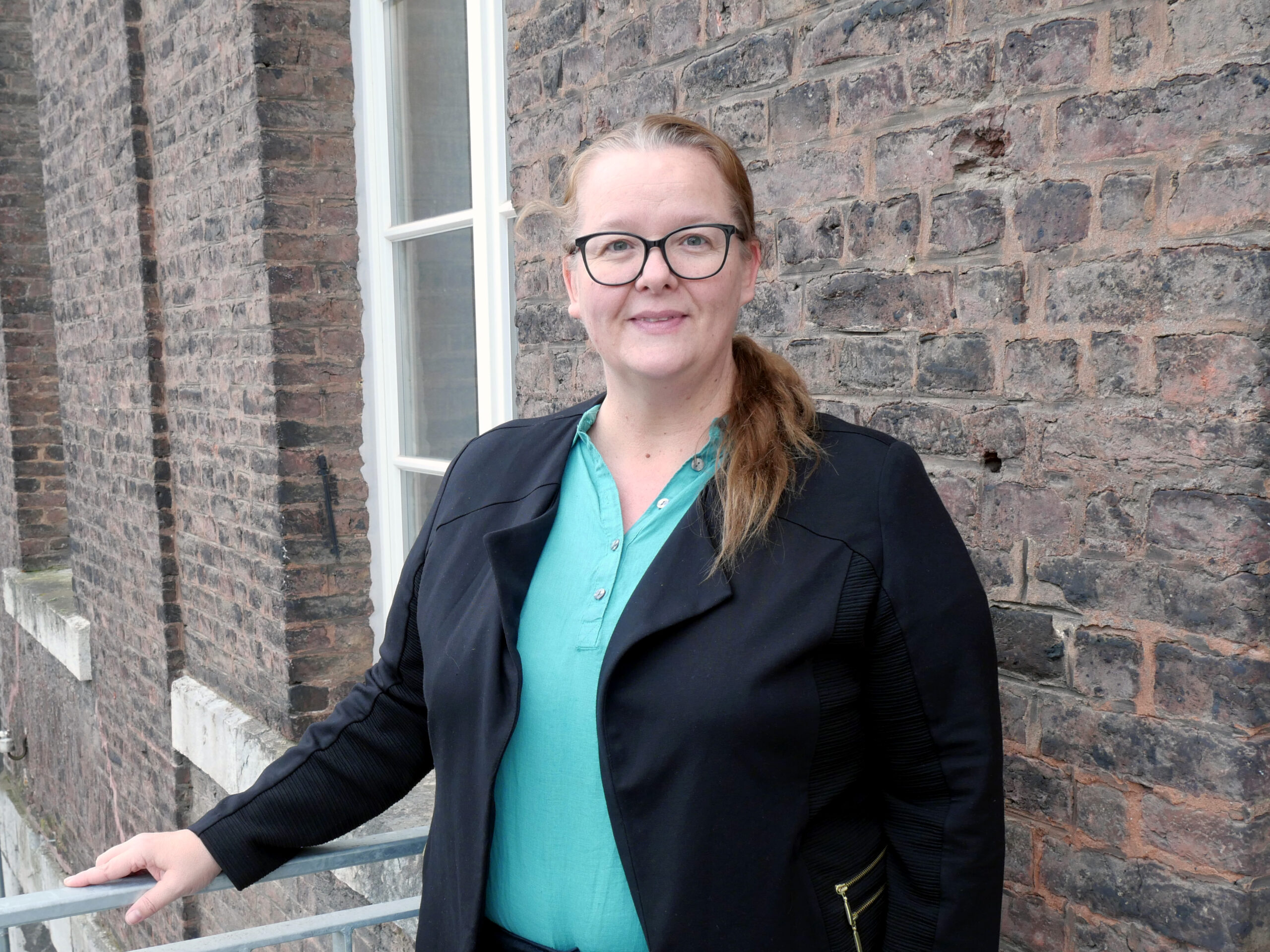
Hannah Star Rogers
Hannah Star Rogers is a scholar, curator, and theorist of art-science. She does research on the knowledge categories of art and science using interdisciplinary Art, Science, and Technology Studies (ASTS) methods.
KHK c:o/re: What do you think is the epistemological value of artistic research?
Hannah Star Rogers: Epistemology asks: What counts as knowledge? How is knowledge produced? How do we justify what we believe to be true? Who gets to decide what is valid knowledge? These are fundamental concerns of STS, and they have been the driving force behind my interest in considering the relative power of art and science, in order to understand how these groups have persisted in knowledge production. It should be said that I have in mind the large tent of STS knowledge production, which can include things like aesthetic knowledges. Artistic research holds significant epistemological value by contributing to knowledge production in ways that are often overlooked. In my book Art, Science, and the Politics of Knowledge (2022), I try to offer a perspective on the epistemological value of artistic research. Drawing from Science and Technology Studies (STS), I argue that art and science are not distinct domains but are intertwined practices that both produce knowledge through shared methodologies such as visualization, experimentation, and inquiry.
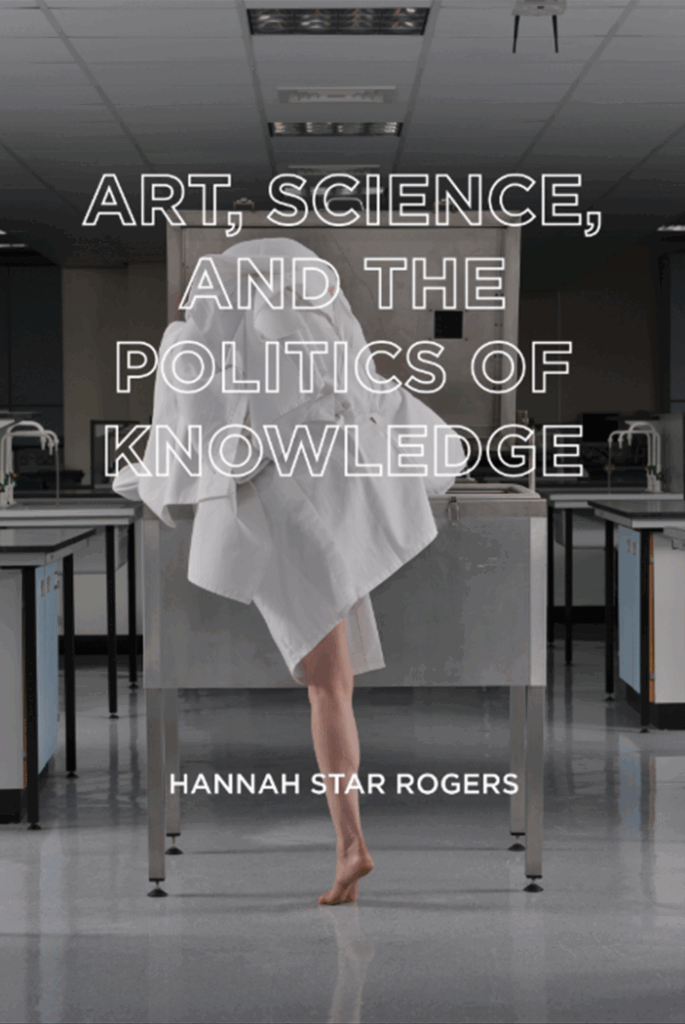
I have a particular interest in liminal objects, like the Blaschka glass marine models or Berenice Abbott’s illustrative science photographs, because they belong to both art and science networks at different times and places. Another phenomenon I’ve been interested in for what it might tell us about art and science as knowledge-making communities are intentionally hybrid art-science practices, like bioart. Their status is different but they can also help us think about STS concerns like expertise, boundary-making, and disciplinary zoning. It’s hardly news that context changes meaning, but these liminal objects are a chance to think about how people construct those meanings by invoking materials and rhetorics.
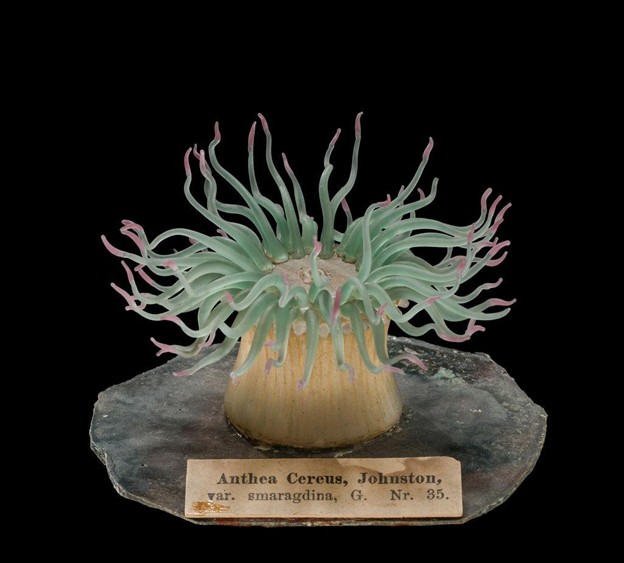
These liminal objects challenge traditional dichotomies between art and science, suggesting that these categories are socially constructed labels that order our understanding of knowledge. Building on the work of Latour and Woolgar, combined with Howard Becker, we can observe that both art and science function as networks that produce knowledge, often overlapping in their practices and outcomes. By examining the intersections of art and science and studying the works of other ASTS scholars, I observe the complex and collaborative nature of knowledge-making in art and in science. This leads me to a position of advocacy which is beyond the scope of ASTS and intersects more with my role as an art-science curator: I want to advocate for a more inclusive understanding of how an expanded understanding of what knowledge is and how it is produced, validated, and experienced.
What specific methodologies are used in artistic research? Can you give an example?
Art methods are many, but most projects involve the discovery of new processes and methods. It is easy to remark that scientists set out their methods first, but in fact, especially in the case of groundbreaking research, they often must discover the method by which to produce, reproduce, and capture data about a phenomenon. Method-making is a central part of the efforts of both artists and scientists.
Put another way, the work of artistic researchers covers many methods we are familiar with in STS, including historical and anthropological research, interviews with community members and experts, ethnographic observations, and philosophical reflections. At the same time, and I speak here about art-science, there are art processes which we tend to use less often: direct work with materials, a sensibility for offering the public an experience of the work (which often shapes choices from the beginning of artists’ processes), the duplication and hacking to standard protocols from within the sciences, and an openness to staying from our original methods. The final “product” may be an installation or performance or poetry, but often what is most revealing are the processes and decisions that shaped it. This recursive attention to method is itself a form of inquiry—and one that carries epistemological weight.
How do product-oriented art forms such as exhibitions or installations differ from process-oriented approaches to art? Is there a hierarchy? How do these approaches influence each other?
In my experience, behind the most interesting art-science projects are even more fascinating methods and processes. Showing methods and processes is a major interest of nearly all the artists (bioart, digital art, eco-arts, participatory/community arts) interviewees I have ever spoken to as part of my Art, Science, and Technology Studies (ASTS) research. It is worth noting that I particularly work with actors in art-science or art-science-technology but I believe that we would find this to be a wider pattern in other areas. A component of many contemporary artmakers’ work is to figure out how to convey their actions or the actions of others (be they communities, plants, microbes, scientists, or otherwise) through their work. Art-science curators often take up this same concern. We ask: how can we design an encounter that invites the public into the process? This can be complex, but it’s central to how we try to help audiences encounter the richness of artistic research. I’ve tried to explore some curators’ approaches to these issues in my forthcoming edited volume, What Curators Know, from Rowman & Littlefield, due out later this year. I also would argue for the need to create conditions that support open-ended artistic inquiry—akin to basic scientific research. Too often, artists are pressured to produce legible outcomes or results. But like scientists, artists should also be given space to ask difficult, speculative questions without immediate expectations of closure or utility. I have written a bit about basic artistic research (BAR) for the journal Leonardo because I believe much more needs to be done to offer artists the conditions under which they might work under the bluest skies possible, that is with open research possibilities like those that have traditionally been supported in basic scientific research.
Artistic Research Part 1: “[I]n an academic environment, […] practice-led research in the arts is still not fully recognized as eligible”
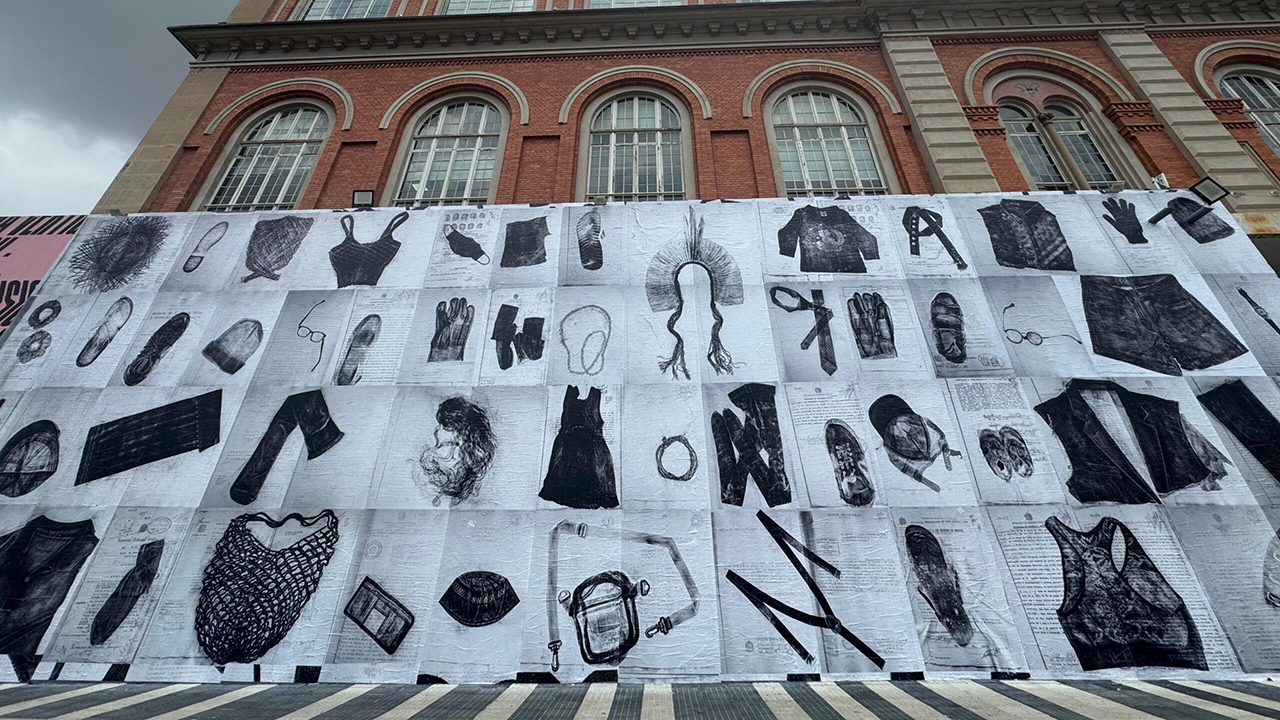
At the KHK c:o/re, the practice of artistic research has always been part of our research interests. For this reason, we invite fellows working closely with the arts in each fellow cohort. In the past four years, we have realized various projects in collaboration with art scholars and practitioners, and different cooperation partners, ranging from artistic positions in the form of performance, installation, discourse, and sound. Many of these events were part of the center’s transfer activities to make the research topics and interests visible, relatable, and tangible. In this sense, art can be seen as a translation for scientific topics. But the potential of the interaction between science and art doesn’t end there. Art is more than a tool for science communication, it is a research culture. Therefore, we ask the following questions: What kind of knowledge is generated in artistic production? How are these types of knowledge lived in artistic research? And, in combination with one of the central research fields of the center: To what extent are artistic approaches methodologies for what we understand as expanded science and technology studies?
To get closer to answering these questions, we talked to some of our fellows who are working closely with the arts and researching the connection between science and art. We want to find out about the epistemic value of artistic research, the methodologies and institutional boundaries of artistic research in an academic environment, and how they implement artistic research in their research areas.
In this first edition of the interview series, we spoke to KHK c:o/re alumni fellow Nathalia Lavigne.
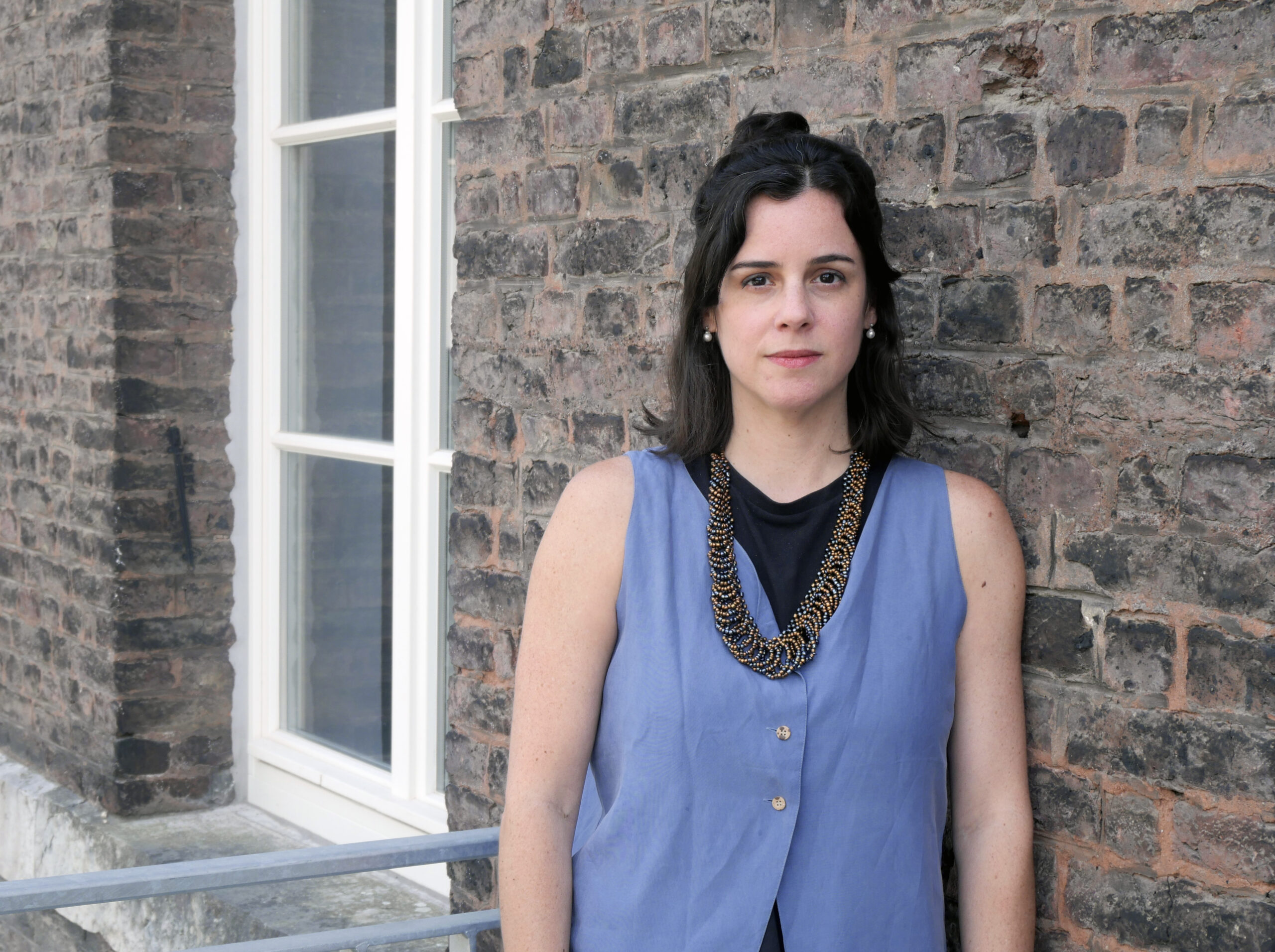
Nathalia Lavigne
Nathalia Lavigne [she/her] works as an art researcher, writer and curator. Her research interests involve topics such as social documentation and circulation of images on social networks, cultural criticism, museum and media studies and art and technology.
KHK c:o/re: What do you think is the epistemological value of artistic research?
Nathalia Lavigne: Artistic research and research-based art have become huge topics in the last two decades and some art historians have even suggested that there is an overabundance of these terms in contemporary art exhibitions in recent years. However, there are several epistemological values coming out of this approach. In general, it comes from combining knowledge from different fields, making them more visible outside of academia (in cultural spaces), and eventually contributing back to the respective field. This interconnectivity of knowledge can be valuable to academia by bringing new perspectives on objectivity and methodologies and providing more space for speculation and a more enjoyable way to absorb research.
What specific methodologies are used in artistic research? Can you give an example?
I can talk about some methodologies developed by artists I have worked with, either as a curator or when writing about their work. One example is the project (De)composite Collections, developed by Giselle Beiguelman, Bruno Moreschi, and Bernardo Fontes for the ZKM’s intelligent.museum residency in 2020. They analyzed the collections of two Brazilian museums through AI reading systems. Using these datasets, which were algorithmically processed with GANs (Generative adversarial networks), they questioned what other art histories might emerge from AI’s readings of the images and how these systems could contribute to understanding the gaze as a historical construct. Part of this methodology involved the development of a dataset organized by recurrent themes in Brazilian modernism, such as indigenous people, people of color, white people, and tropical nature. This work was also part of a project developed by students and faculty members at the University of São Paulo (USP), so it originated in an academic environment.
Is there a specific aesthetic that characterizes artistic research? Like trends or movements?
I would say that there are some characteristics that we can notice in the way these projects are formalized depending on the period. One that has been quite evident in recent years is the so-called “forensic aesthetics.” Popularized by artist and researcher Eyal Weizman, the term refers to a methodology used in art to explore the memory of places and objects as forms of testimony. This aesthetic has influenced artists working on topics such as repressed memory and collective amnesia in different contexts. One artist I have collaborated with as a curator is Rafael Pagatini, whose work addresses the memory of the Brazilian Civil-Military Dictatorship (1964-1985) in the present. In his process, he applies methodologies from both history and law, which affects how these memories are addressed (or omitted) from institutional archives.
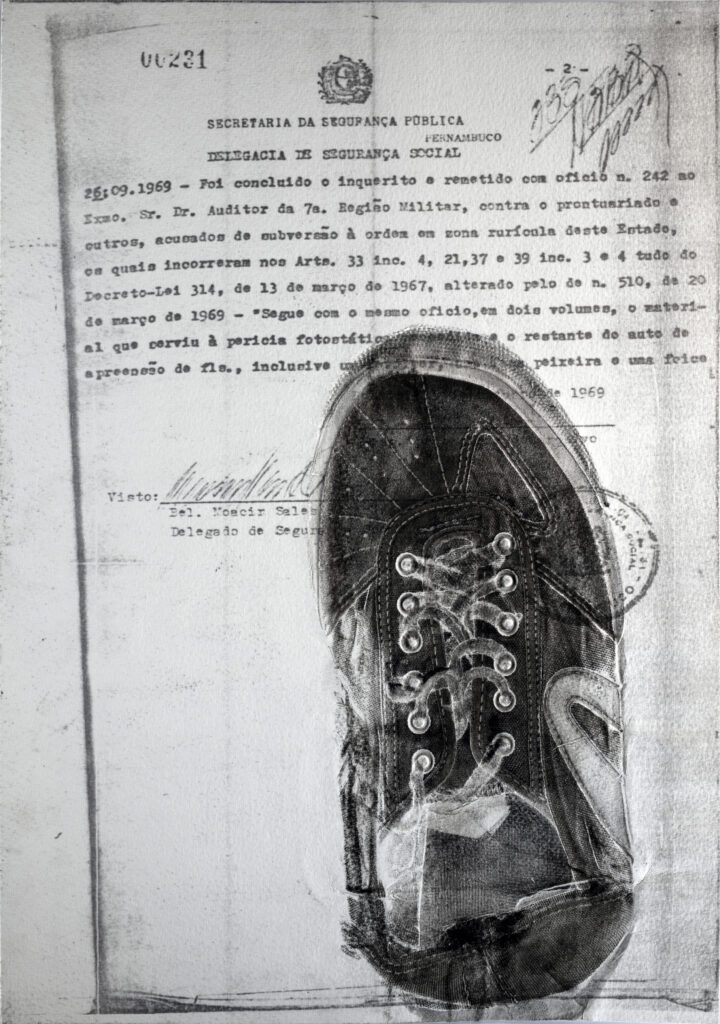
But there are also artists who have been collaborating with scientists long before this kind of artistic production was labeled “artistic research.” For example, since the 1990s, Eduardo Kac has developed projects with bioengineers, geneticists, and, more recently, astronauts and space agencies to create his space arts projects. In his case, the methodologies and the process of materialization vary greatly depending on each project.
What are the problems and challenges of artistic research in an academic environment?
In general, the challenges in an academic environment are that practice-led research in the arts is still not fully recognized as eligible for funding or career assessment procedures. But this has been changing, especially since the Vienna Declaration on Artistic Research co-written by different European associations in 2020. However, in countries from the Global South — or even in the US, where public funding for research is limited — this reality is very different. As I’ve heard from artists engaged in artistic research in Brazil, for example, the challenges are not so much in an academic environment but rather in the art system in general. As the Brazilian art system still largely revolves around the market due to the fragility of public institutions, research-based art finds it difficult to fit into a more commercial logic that prioritizes art objects that are less process-oriented.

